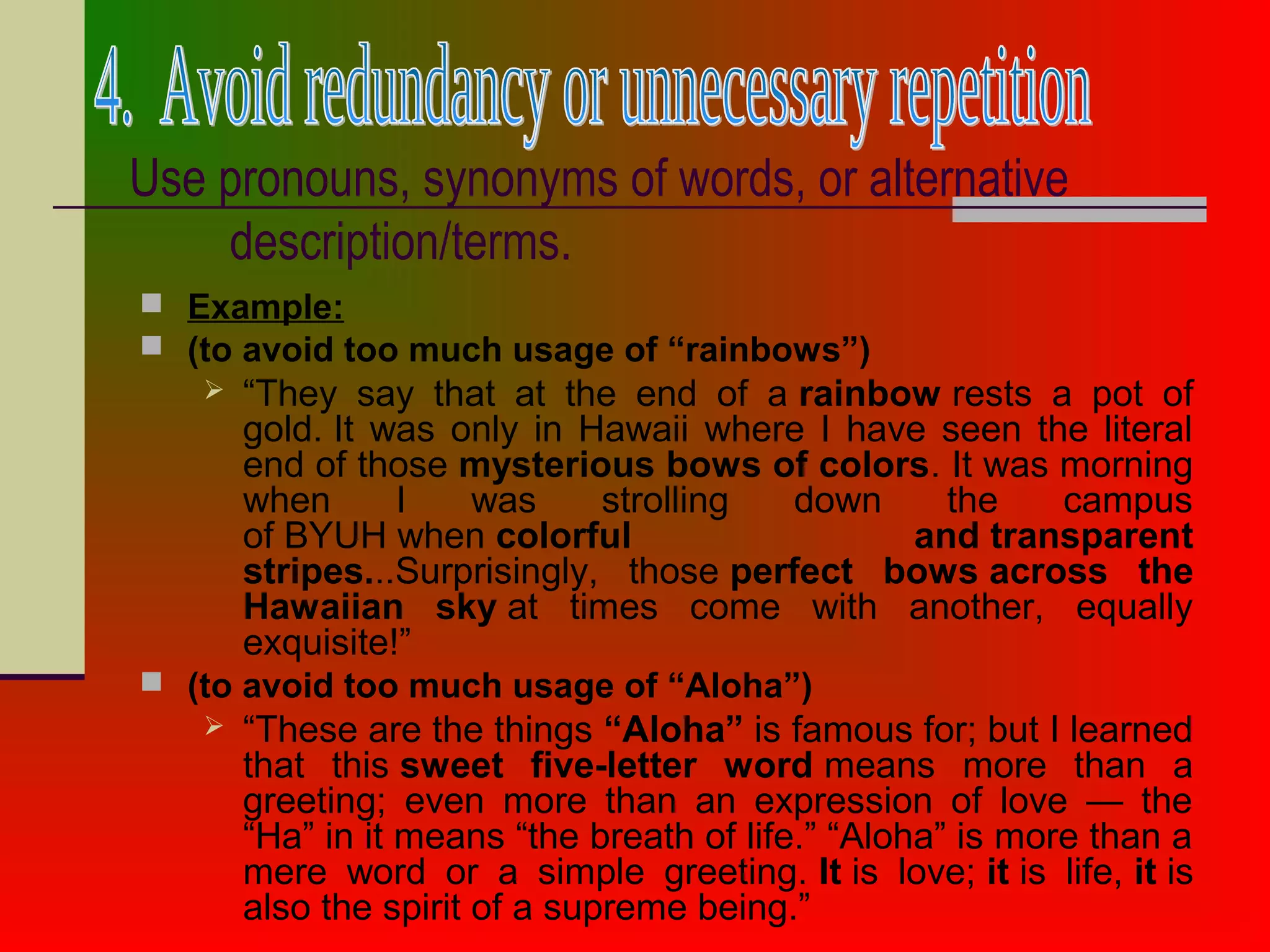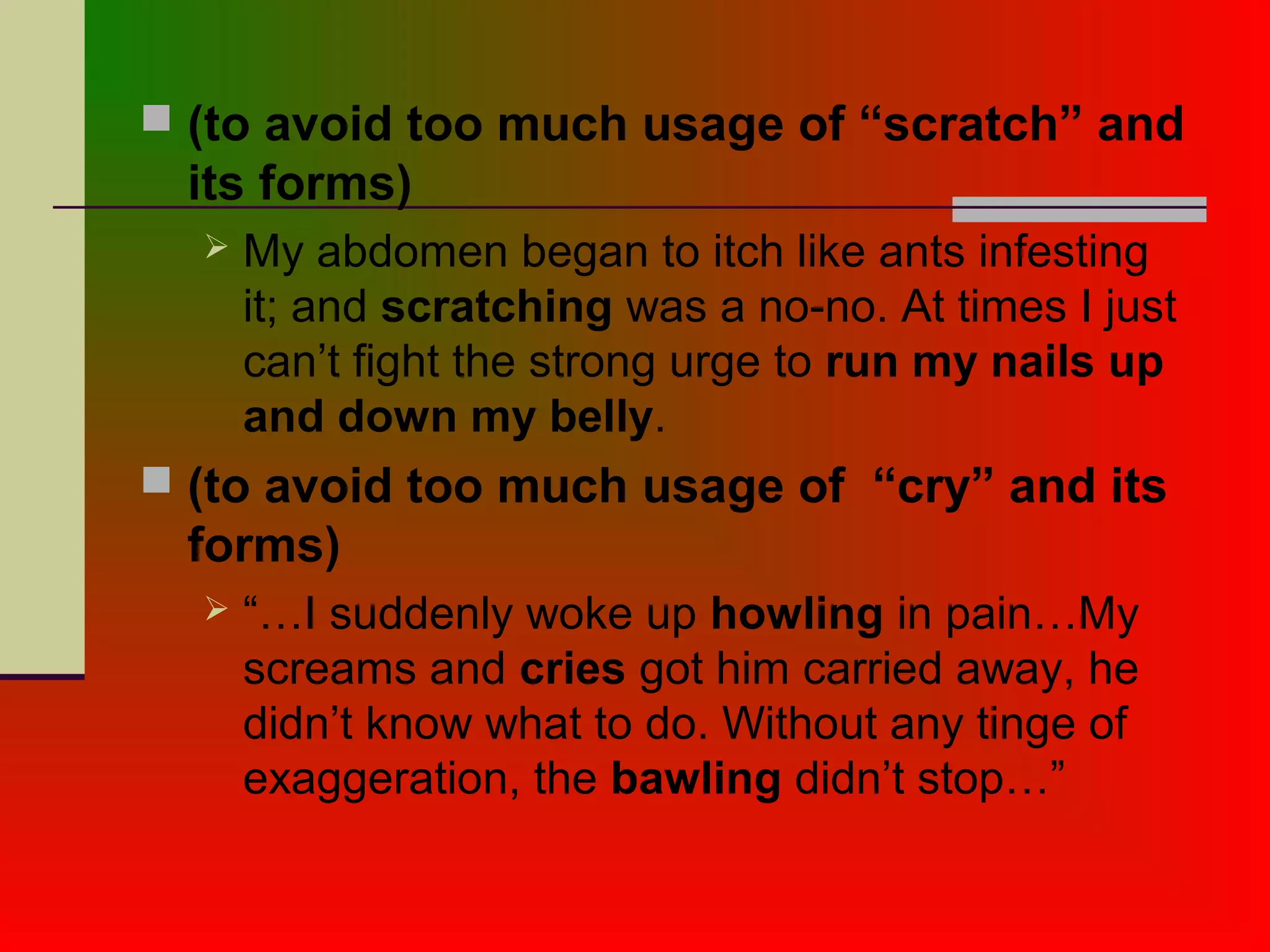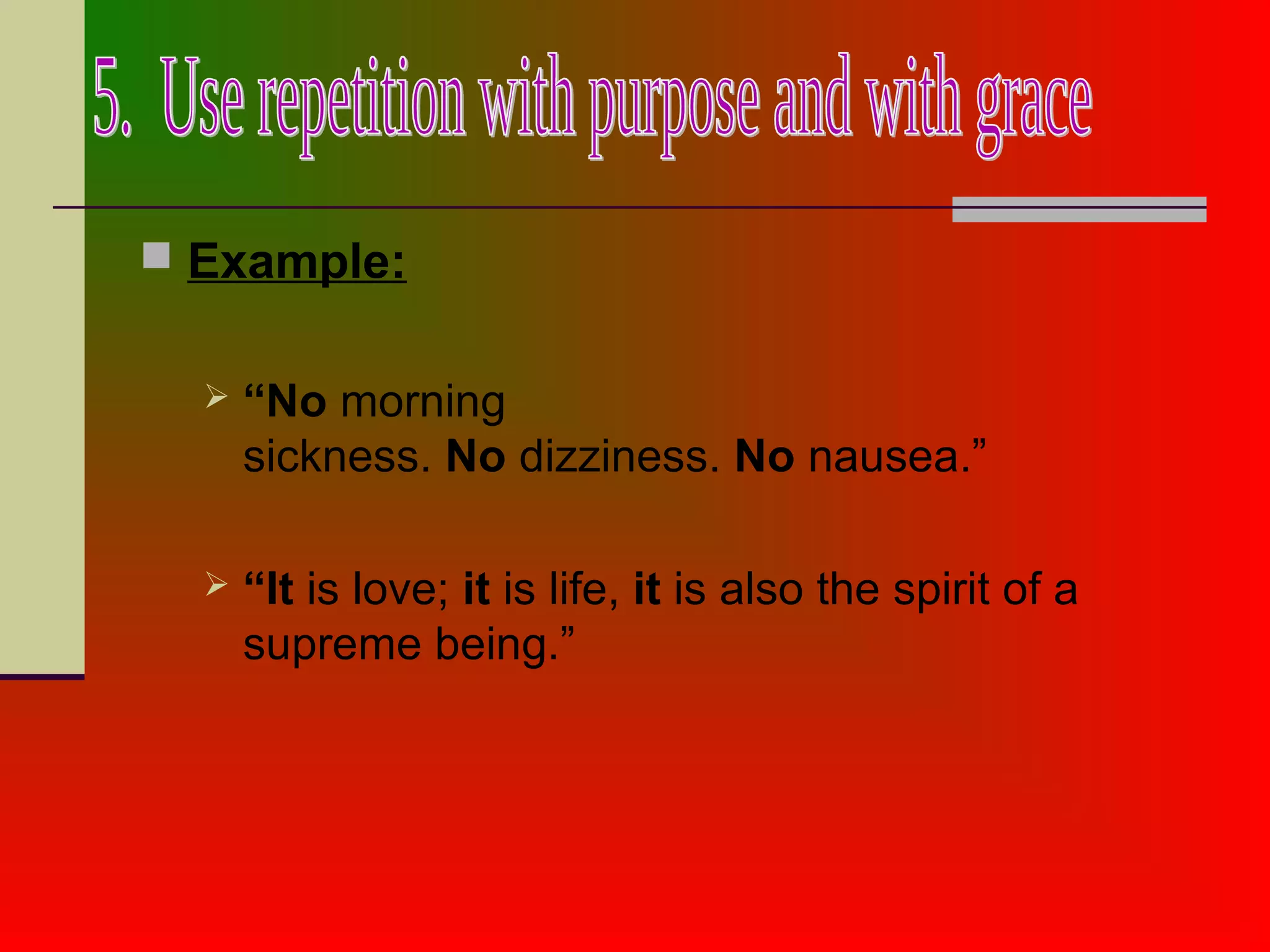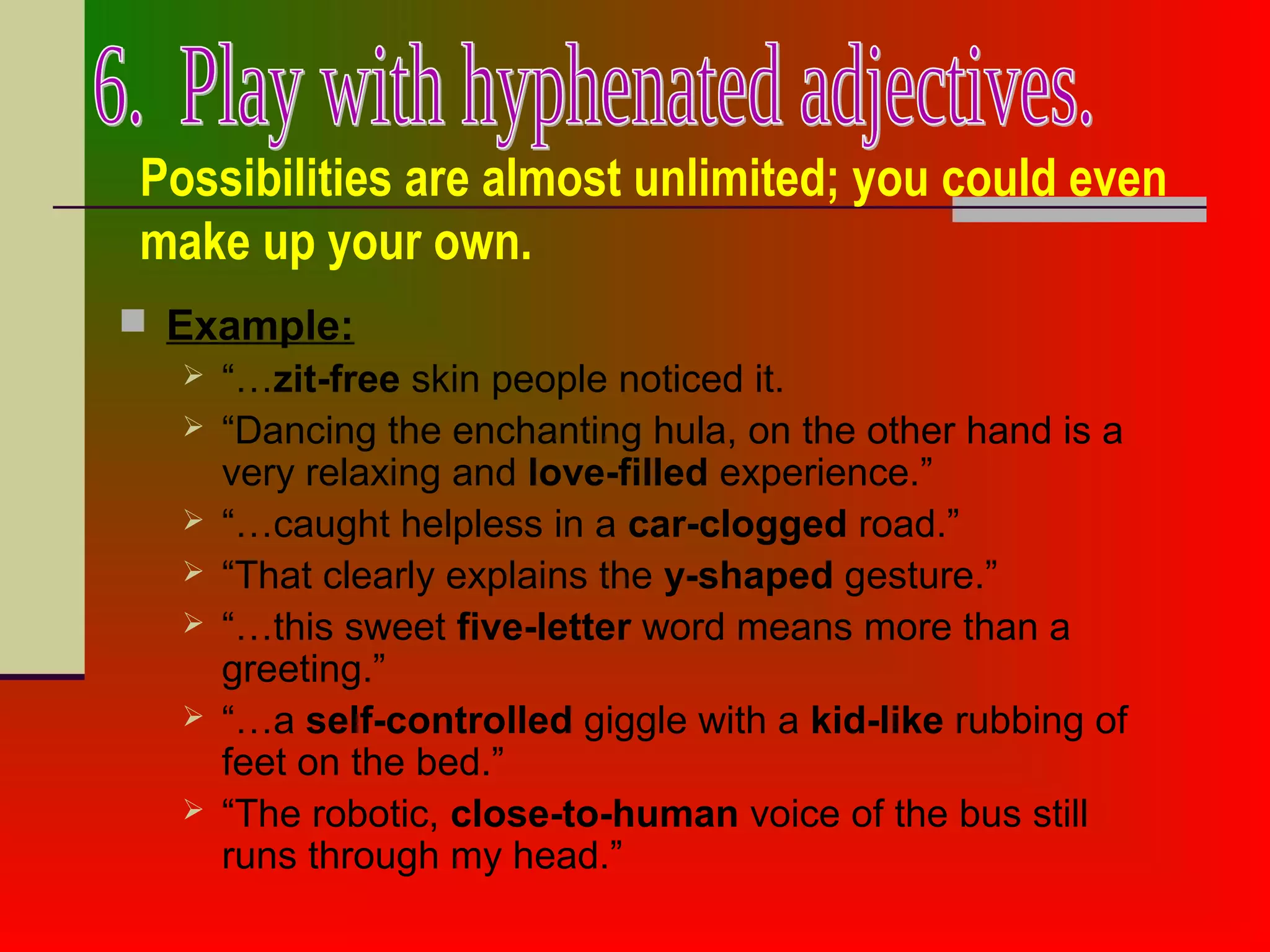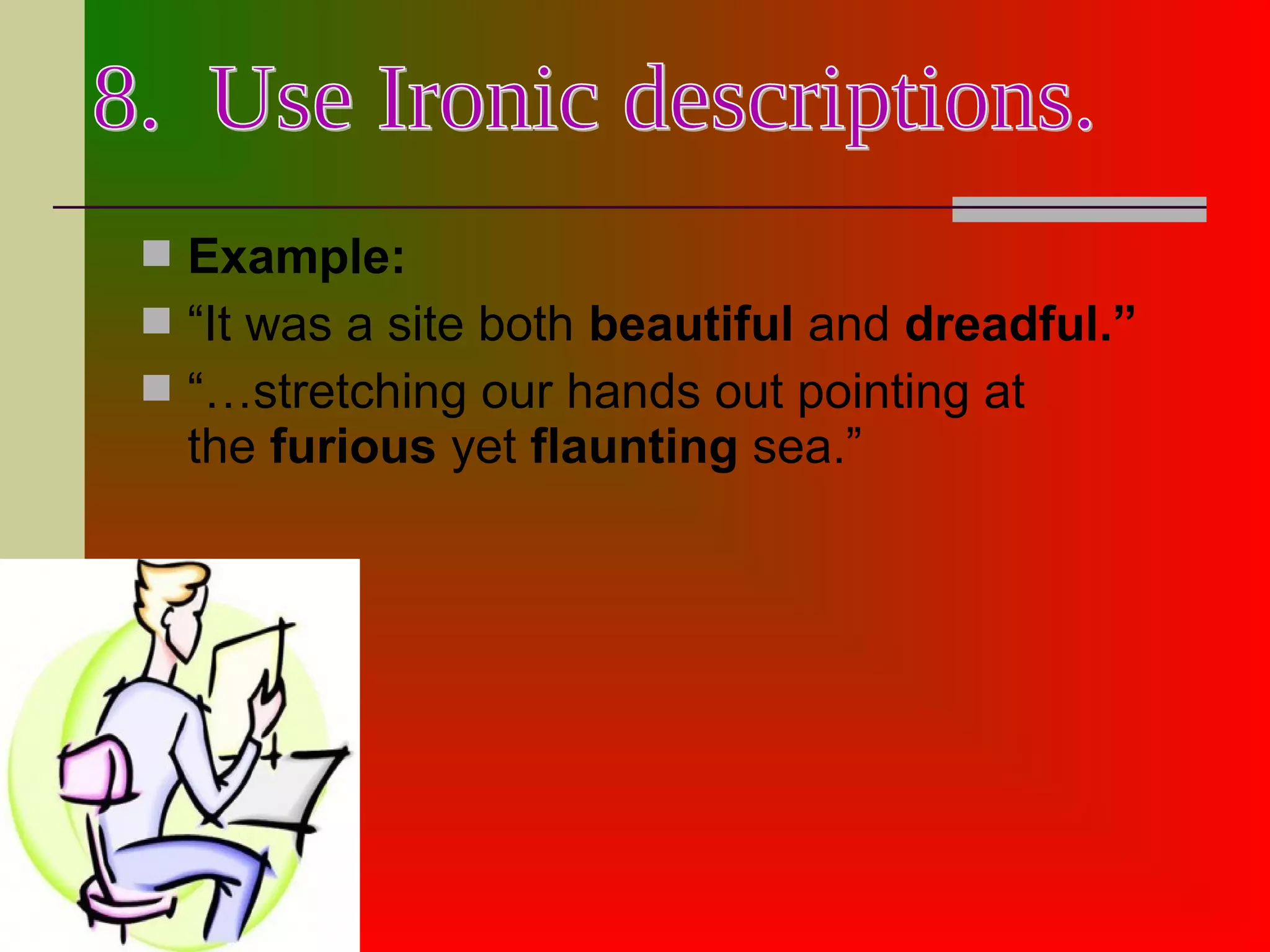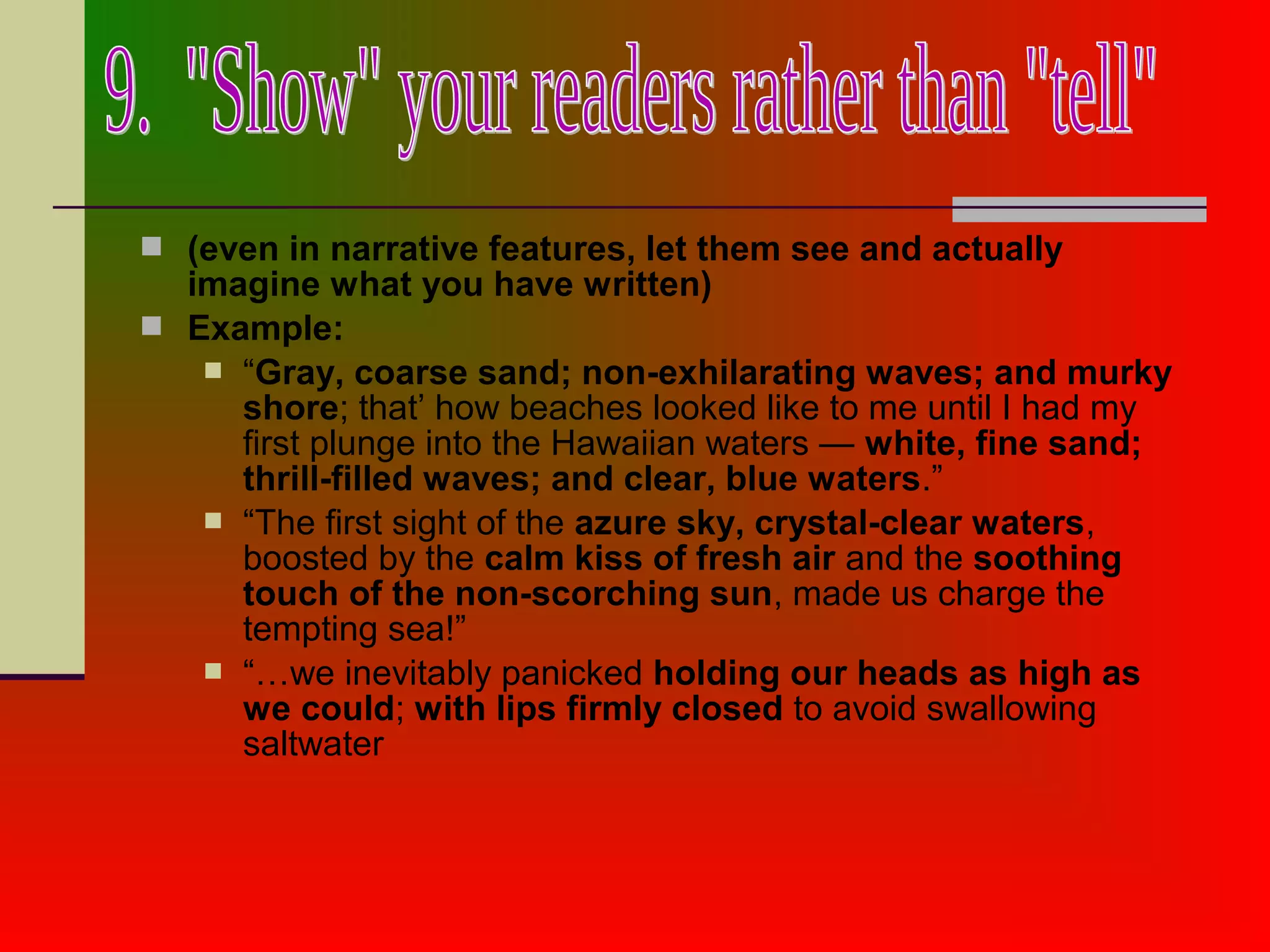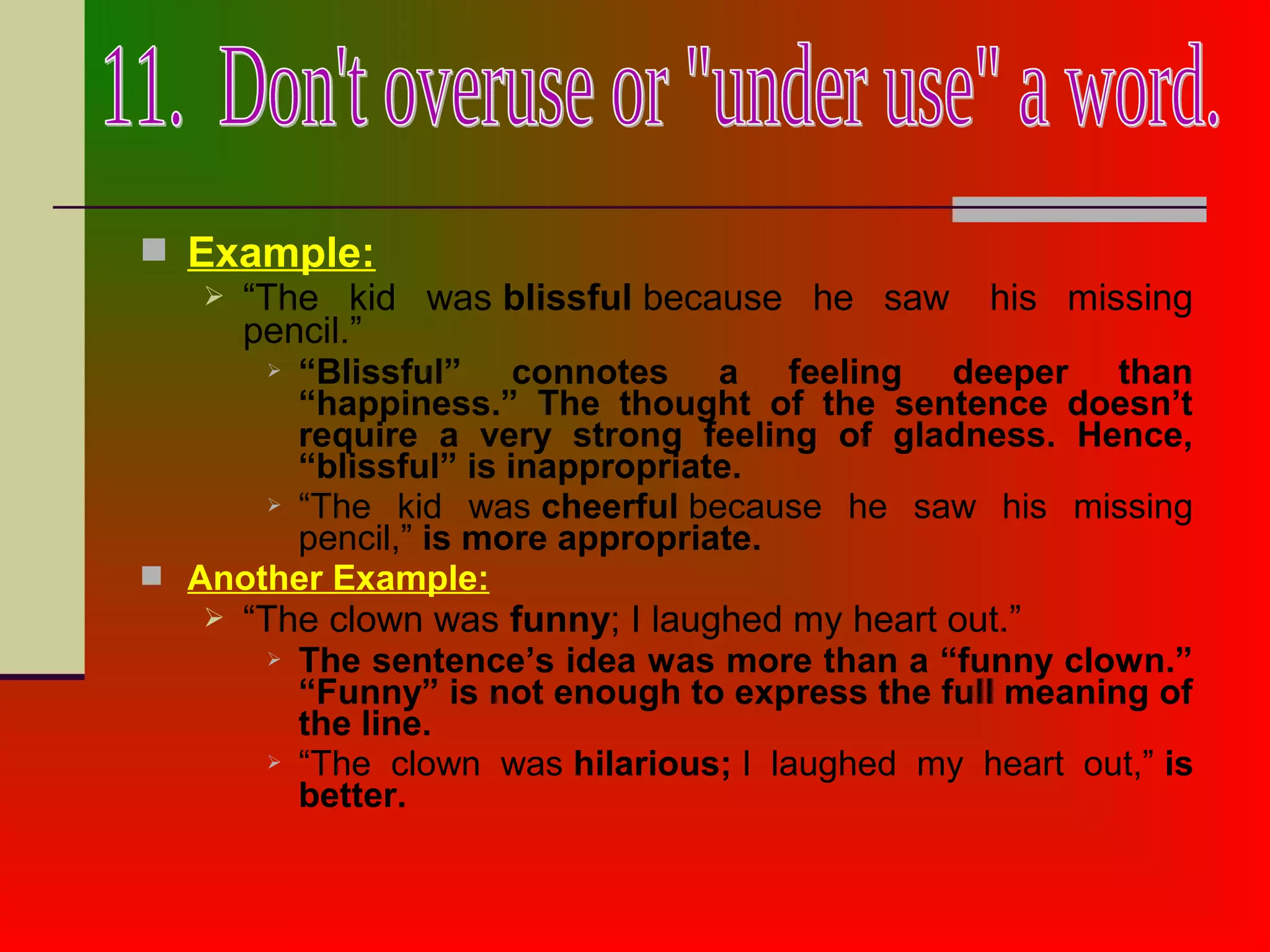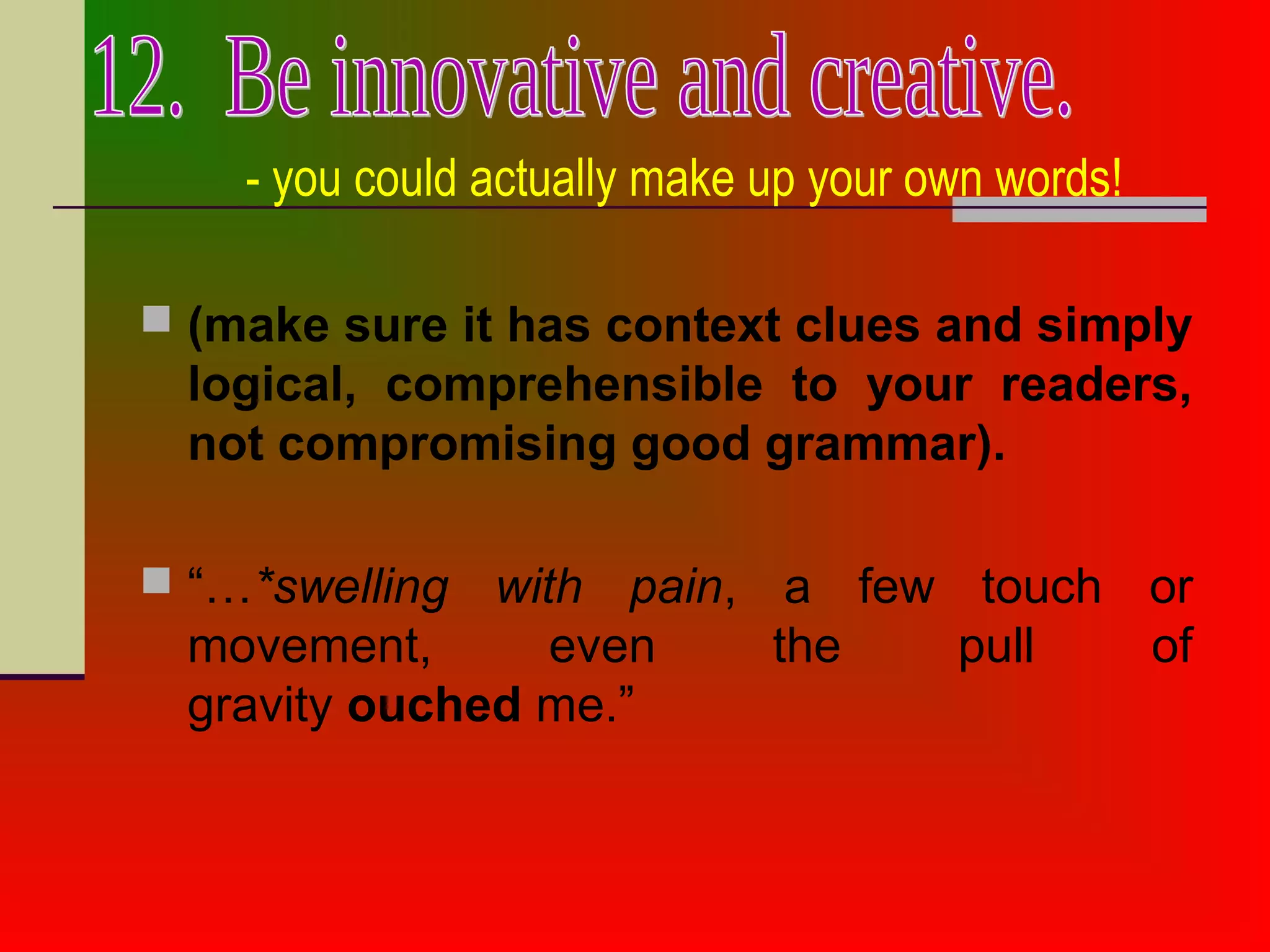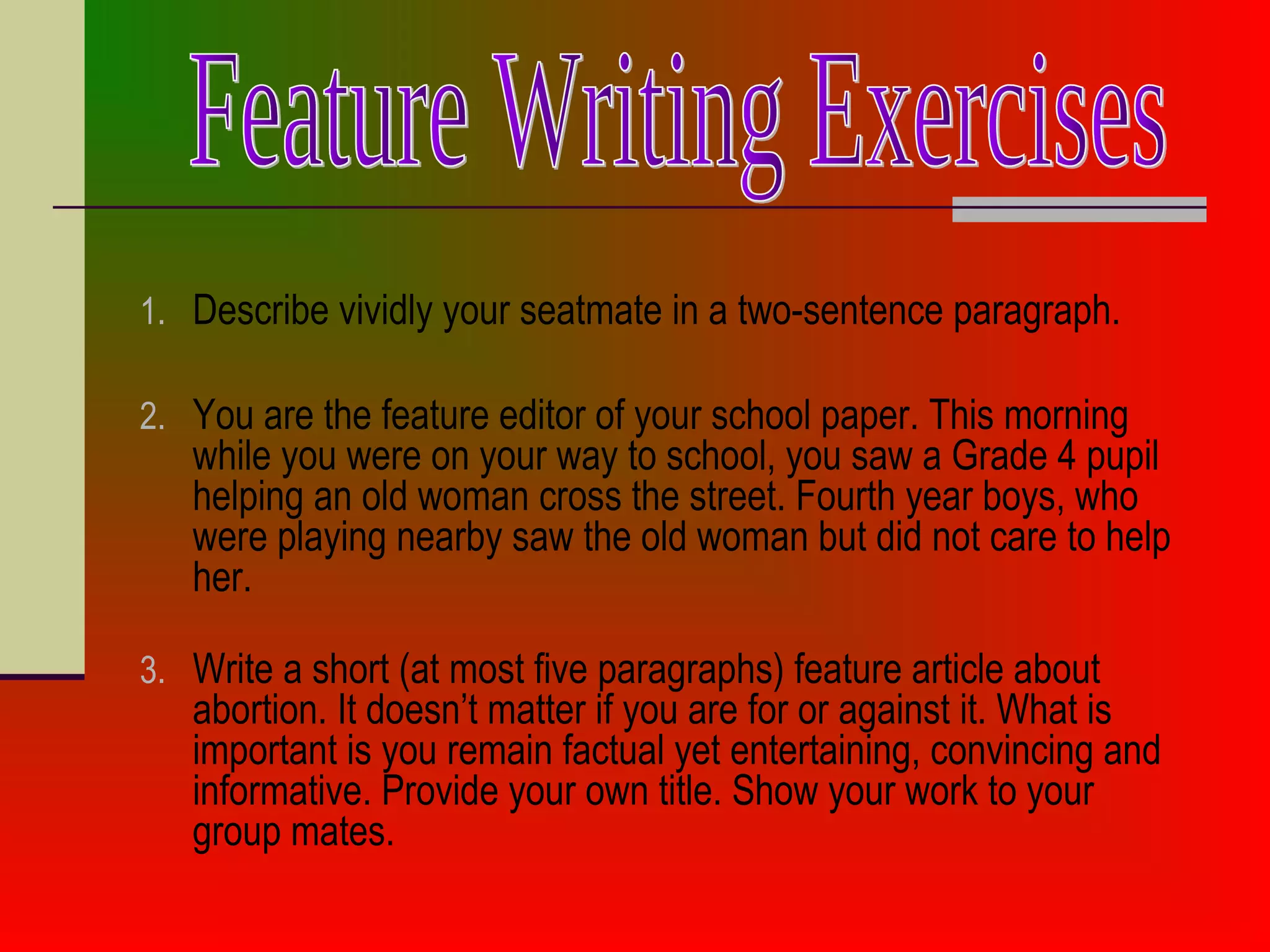This document provides information about feature writing, including the key elements and styles of feature stories. It defines what a feature writer and feature story are, and discusses the main differences between features and standard news stories. The document also outlines the main components of a feature story, including the lead, body, and conclusion. It provides examples of different types of feature stories and offers tips on writing techniques, such as using descriptive language, quotes, anecdotes and other devices to engage readers. Additionally, it provides guidance on developing the structure, flow, and tone of a compelling feature story.
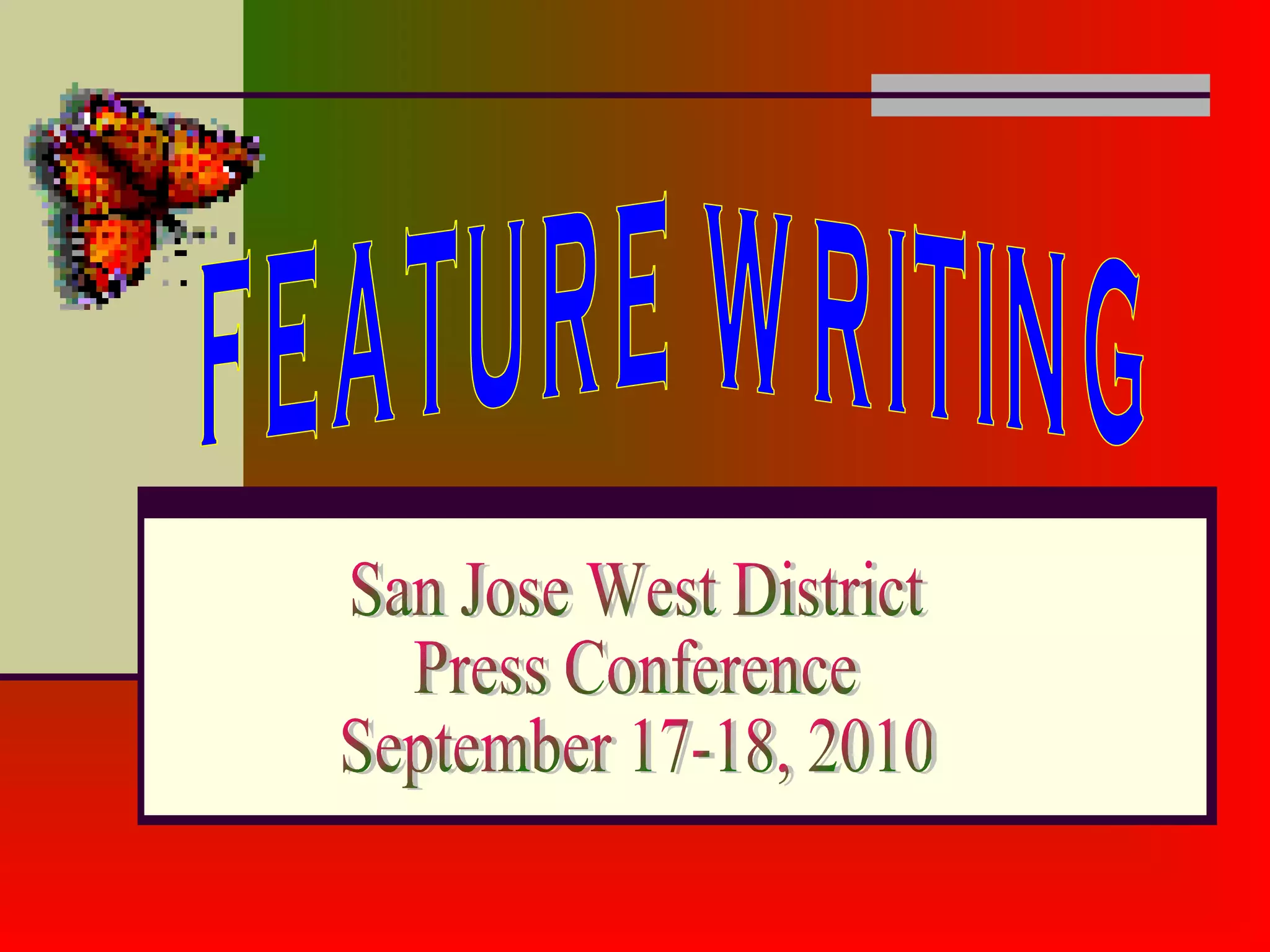
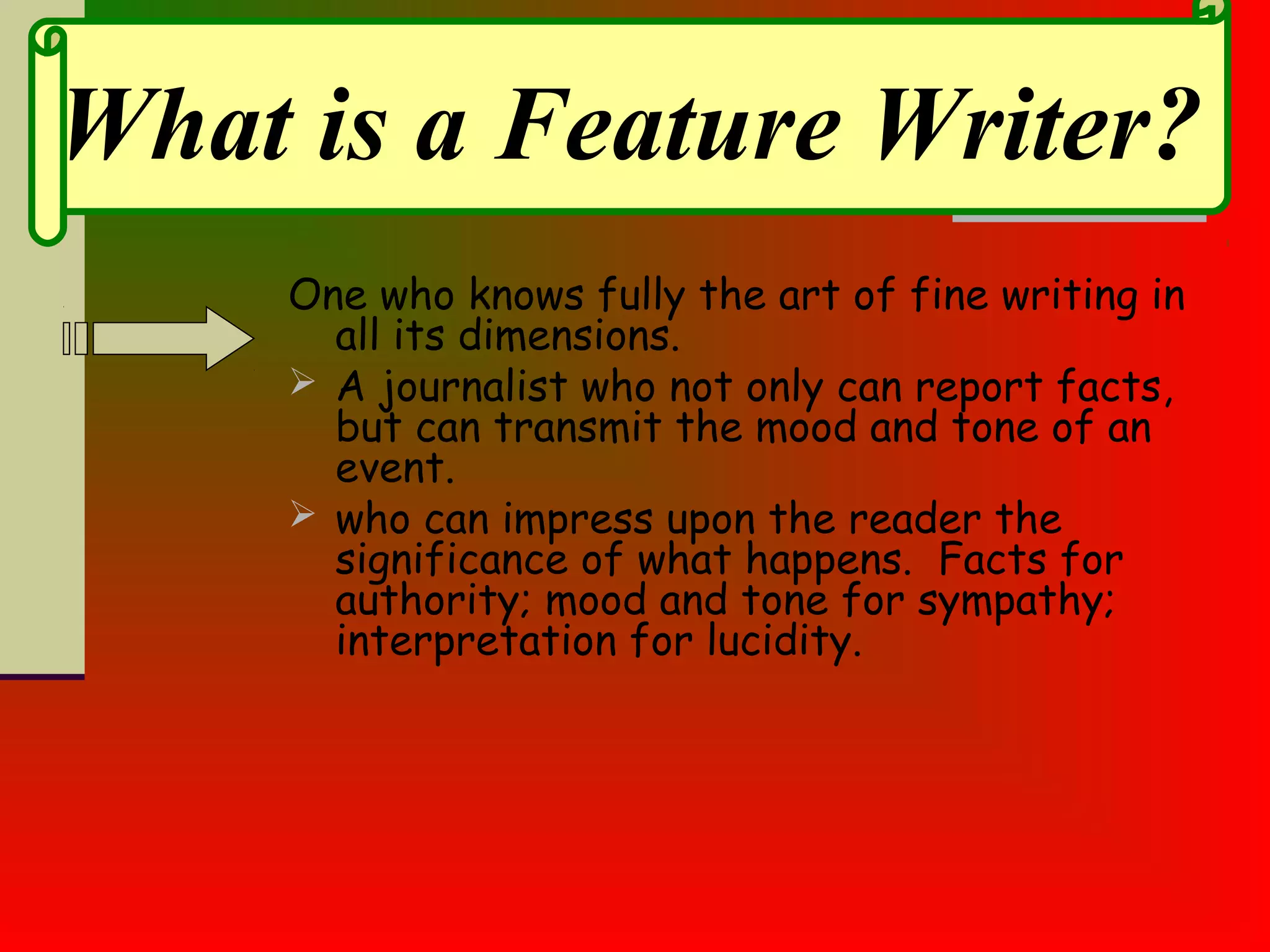
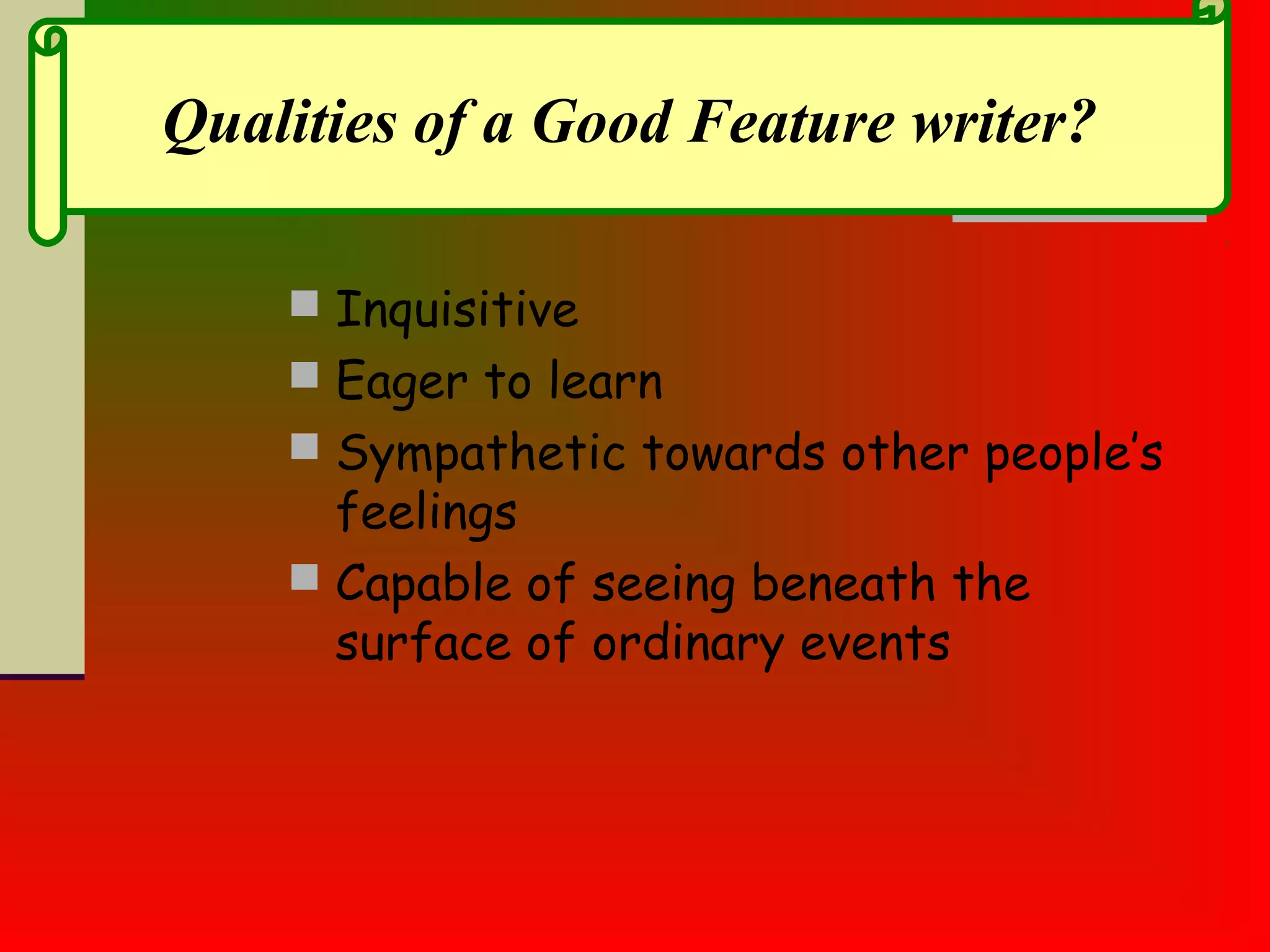
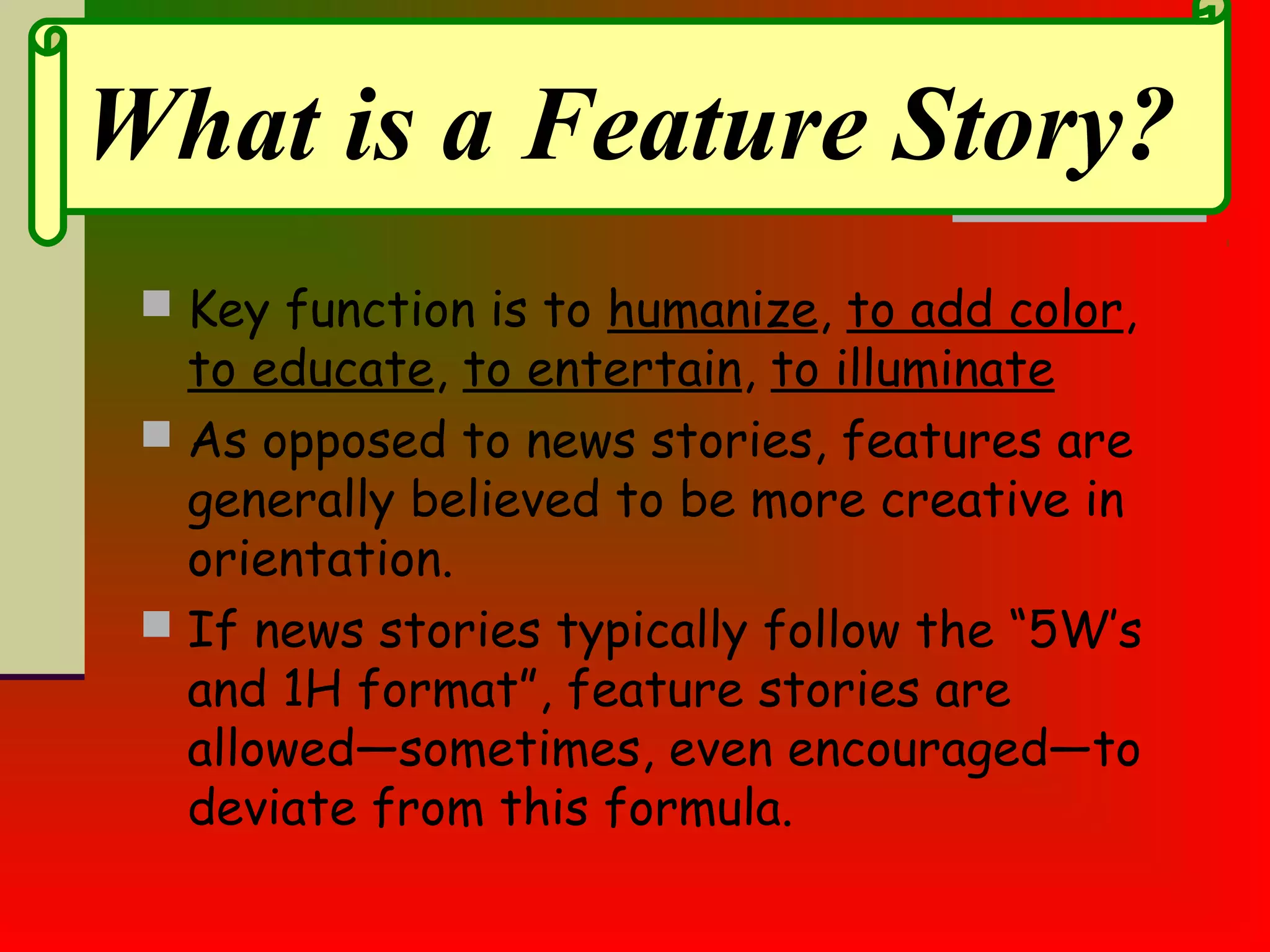

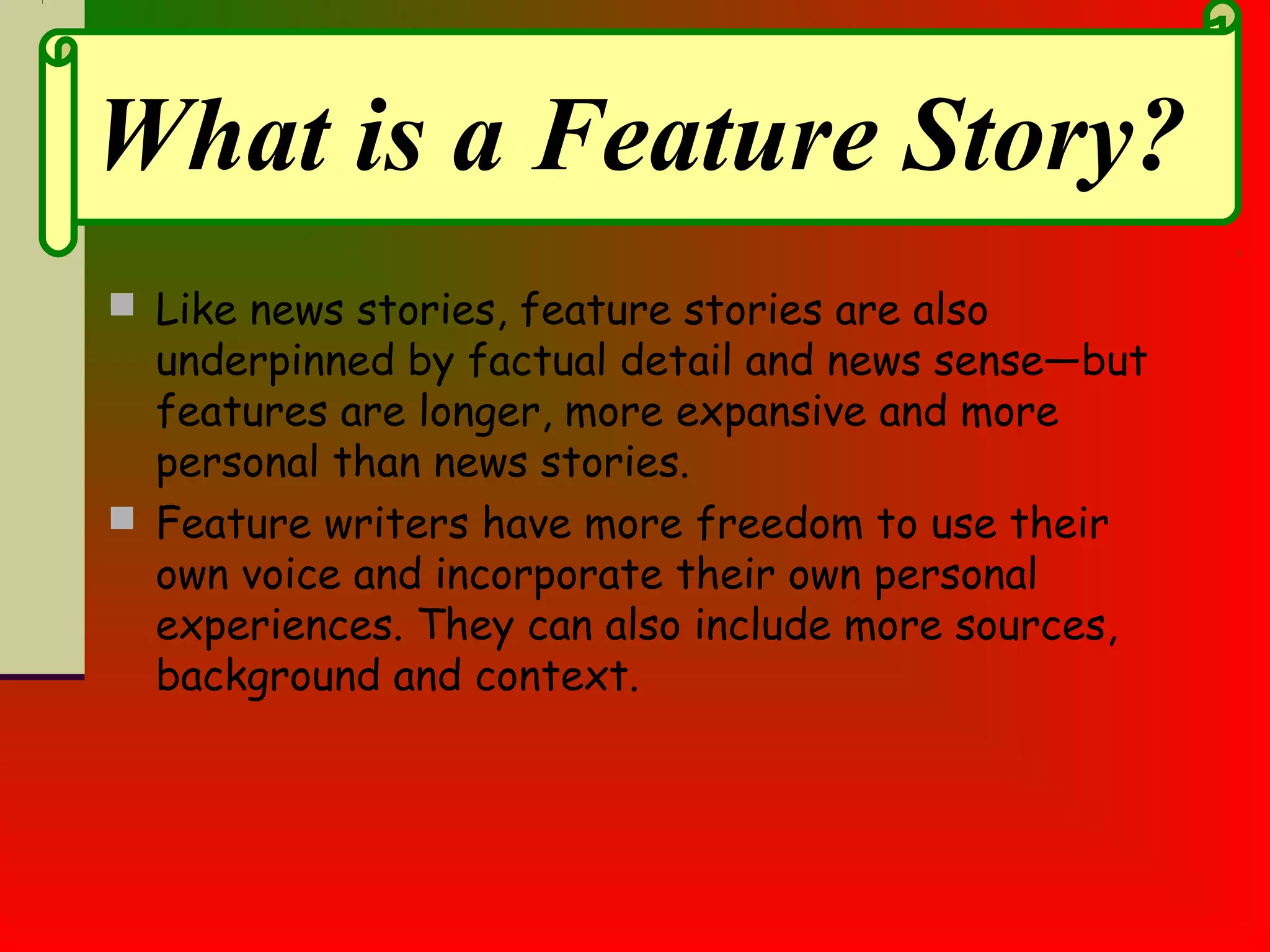
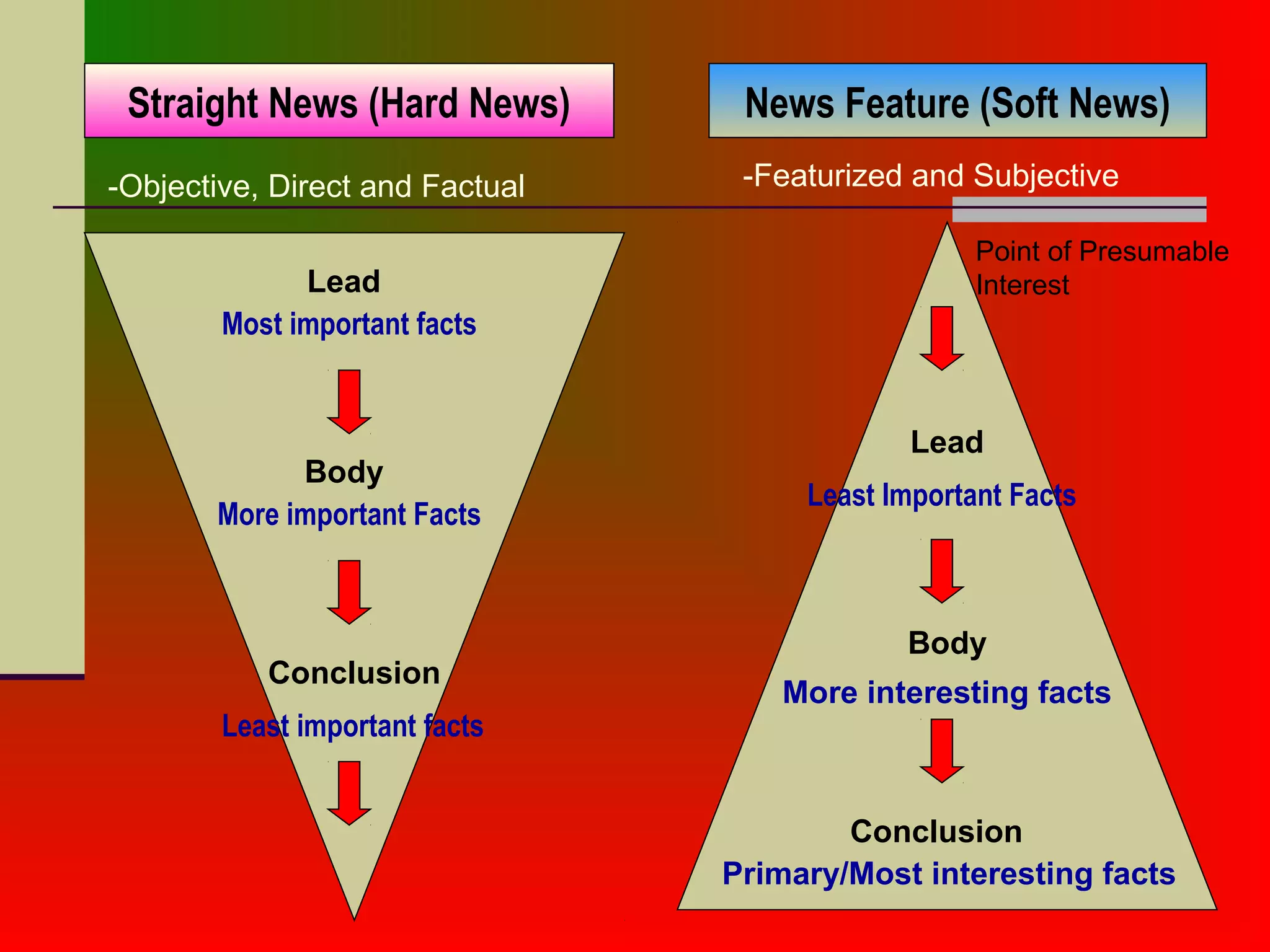
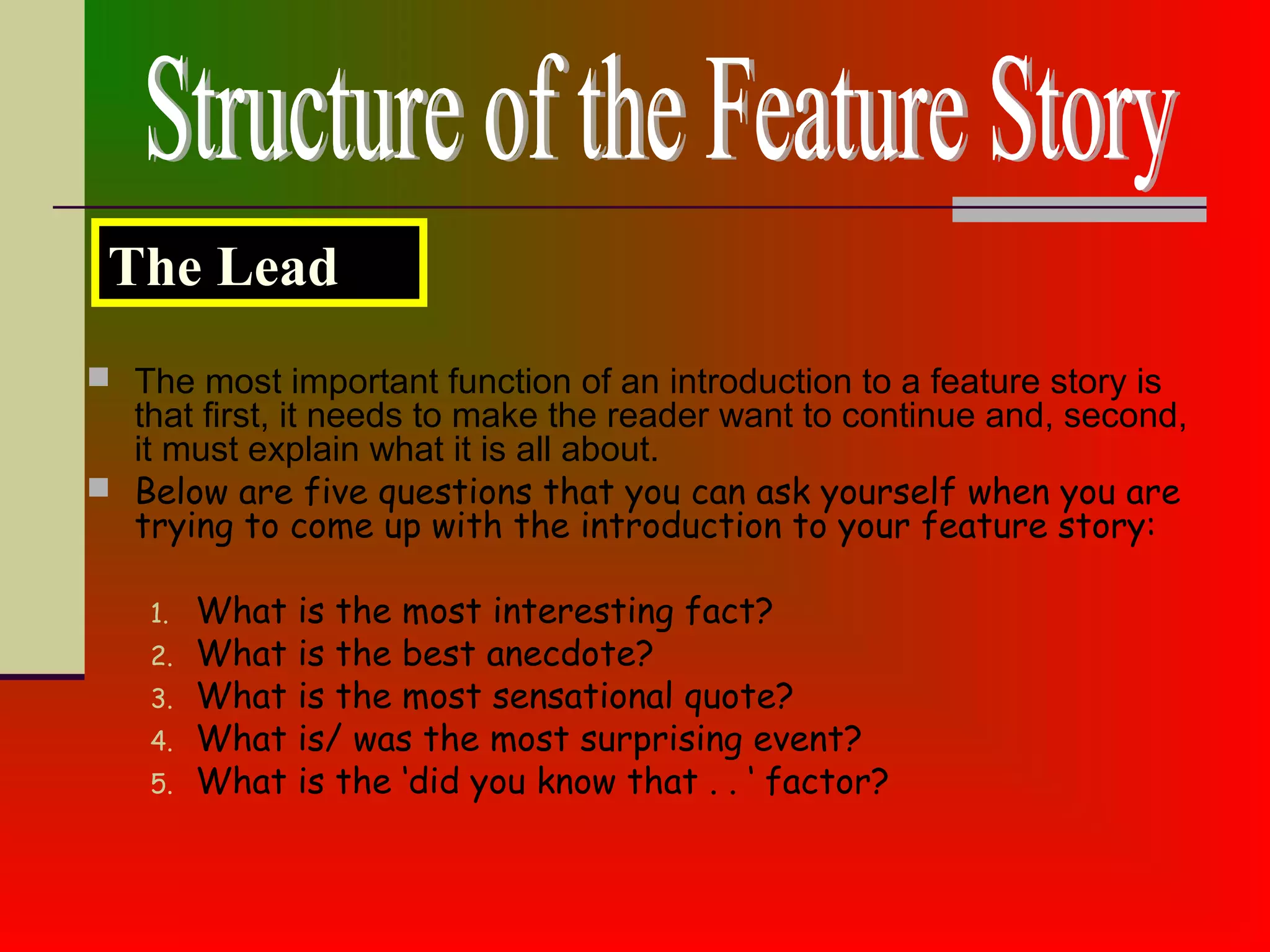


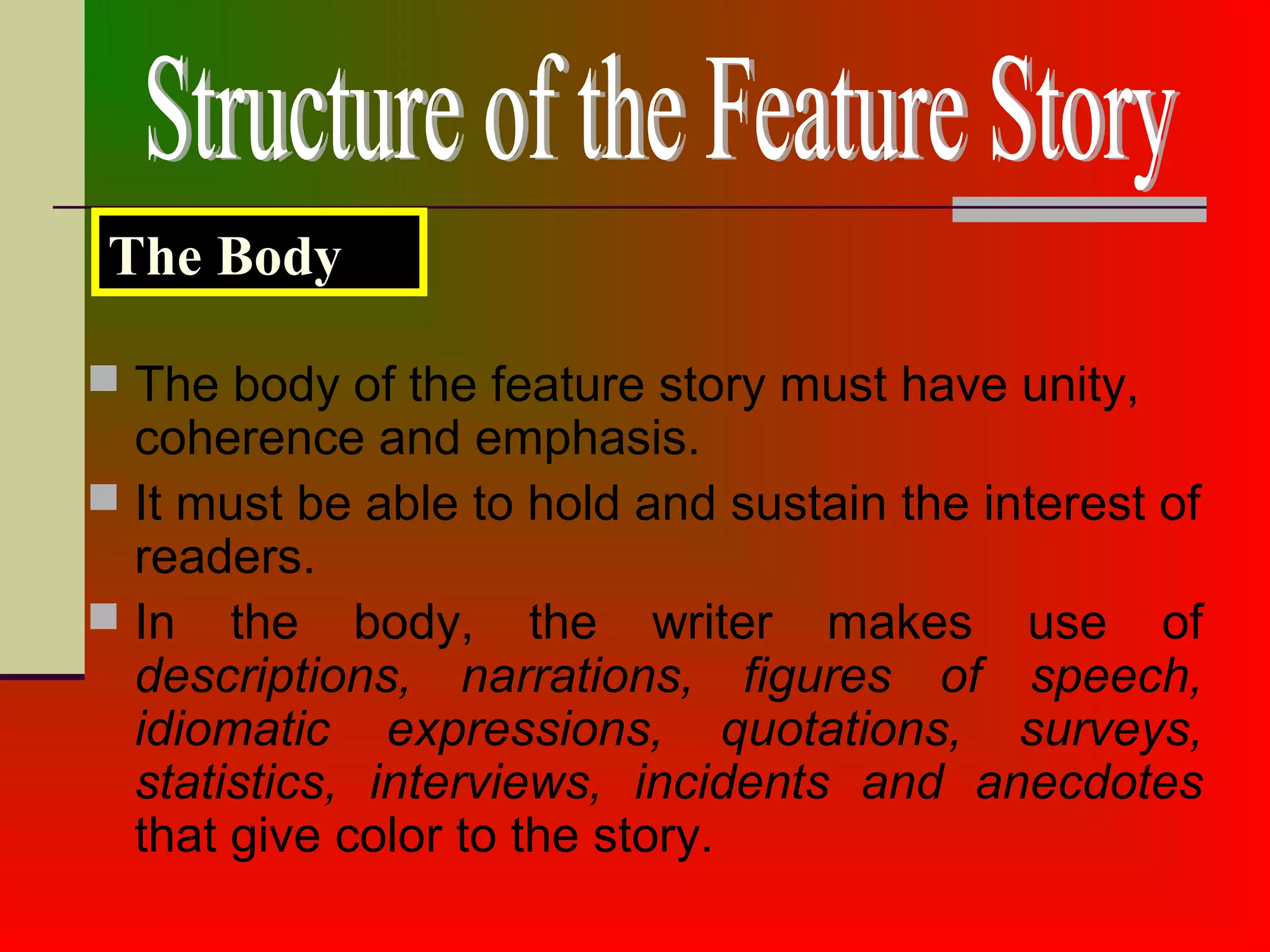
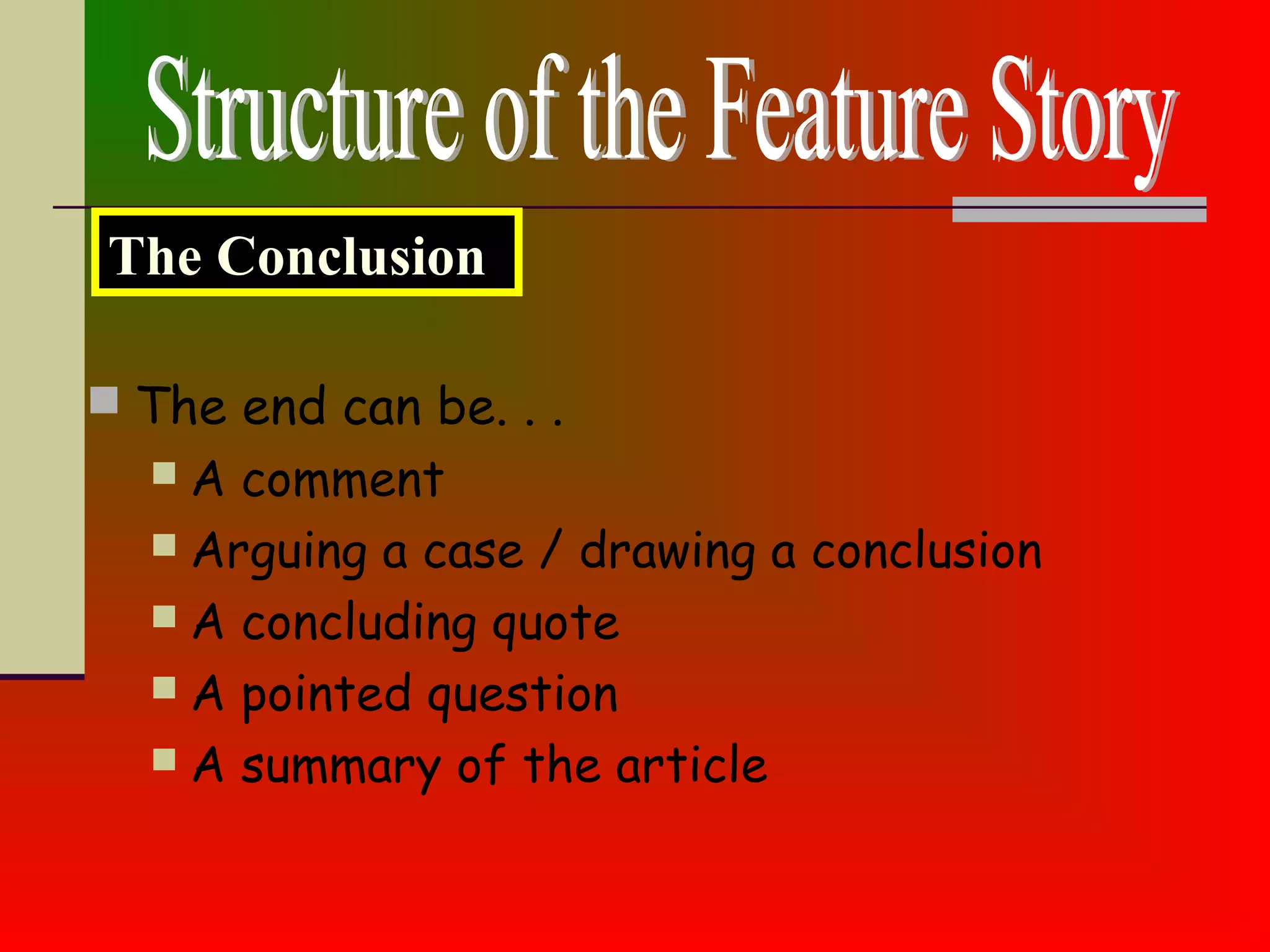
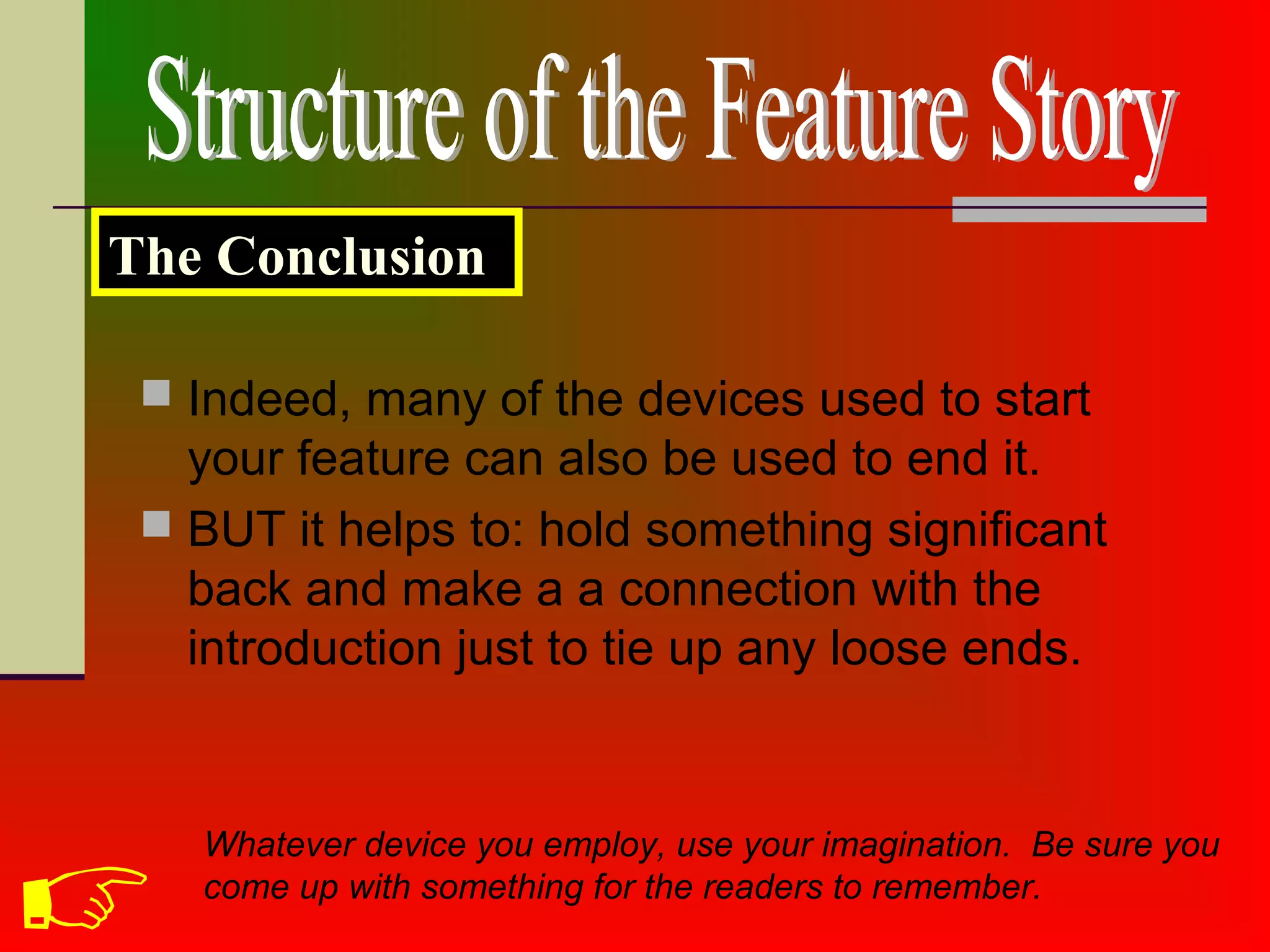
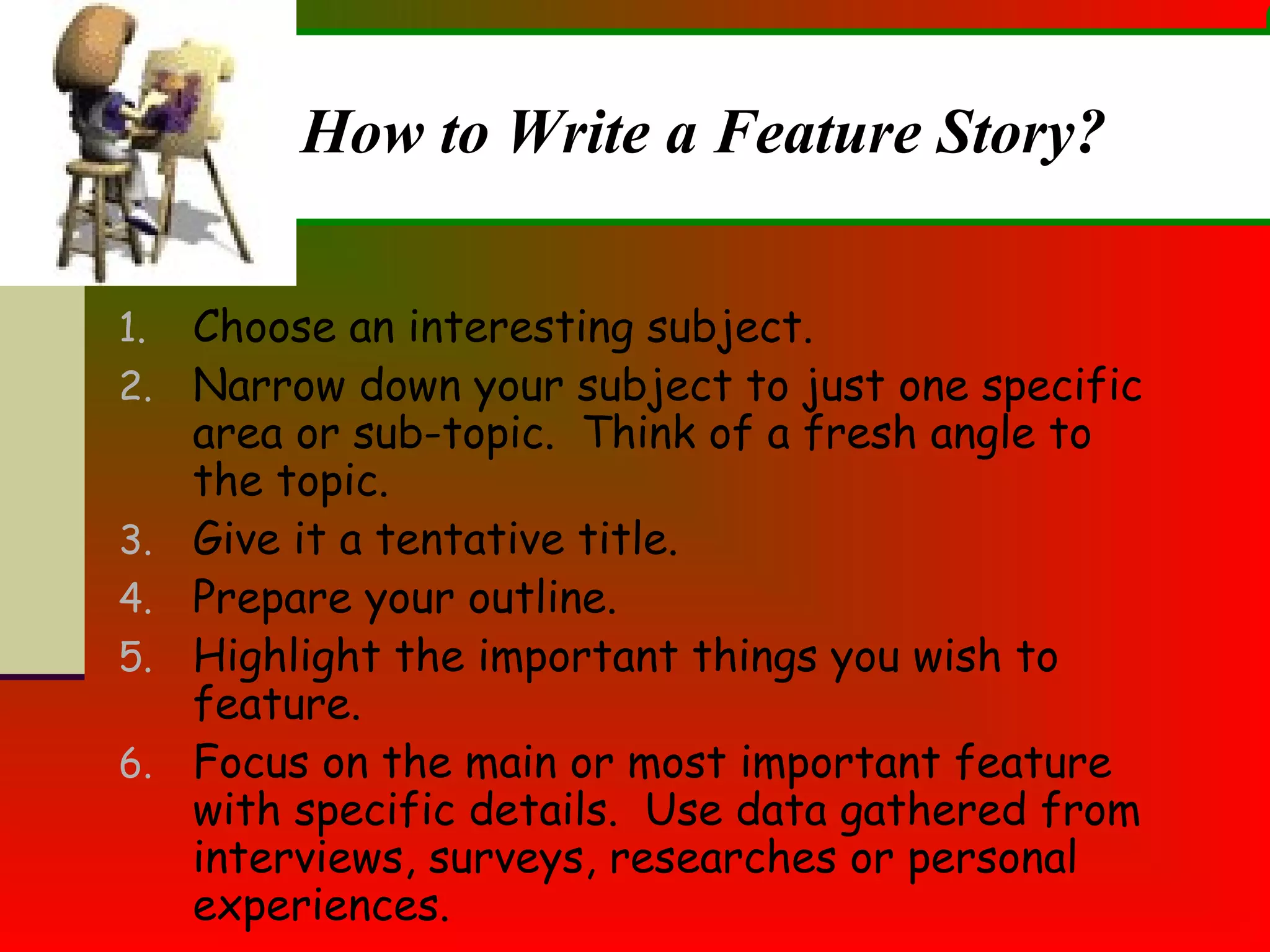
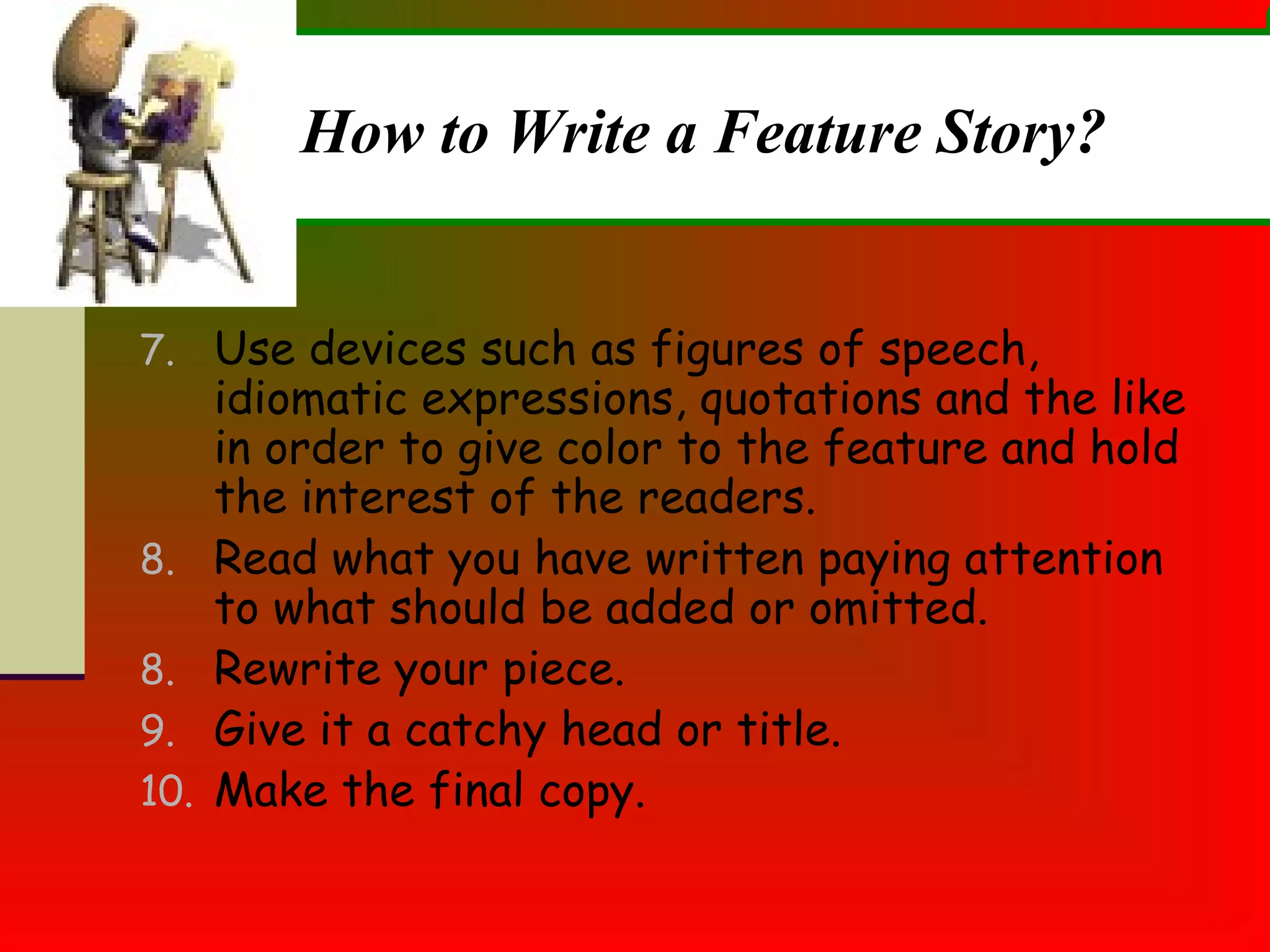
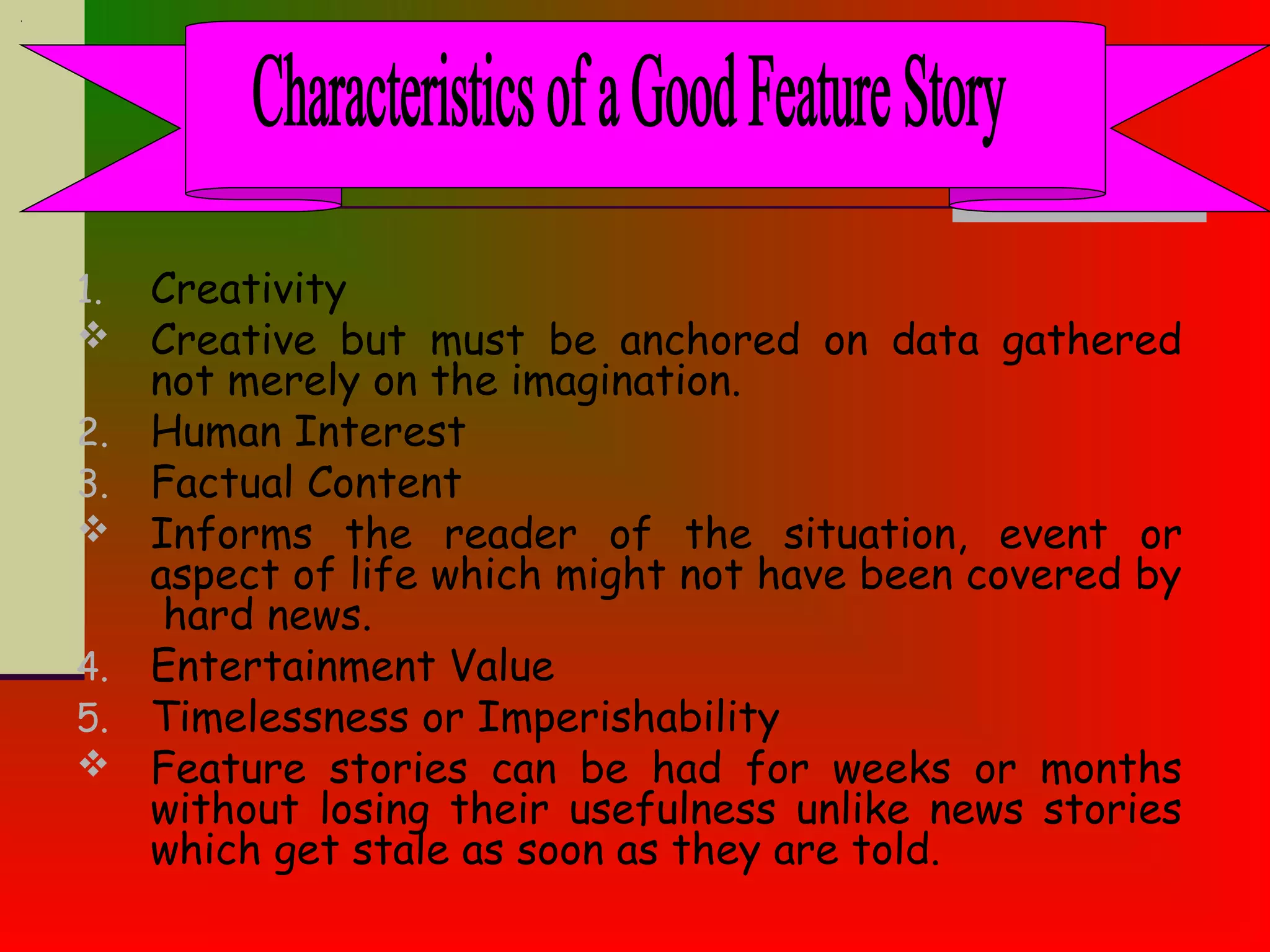
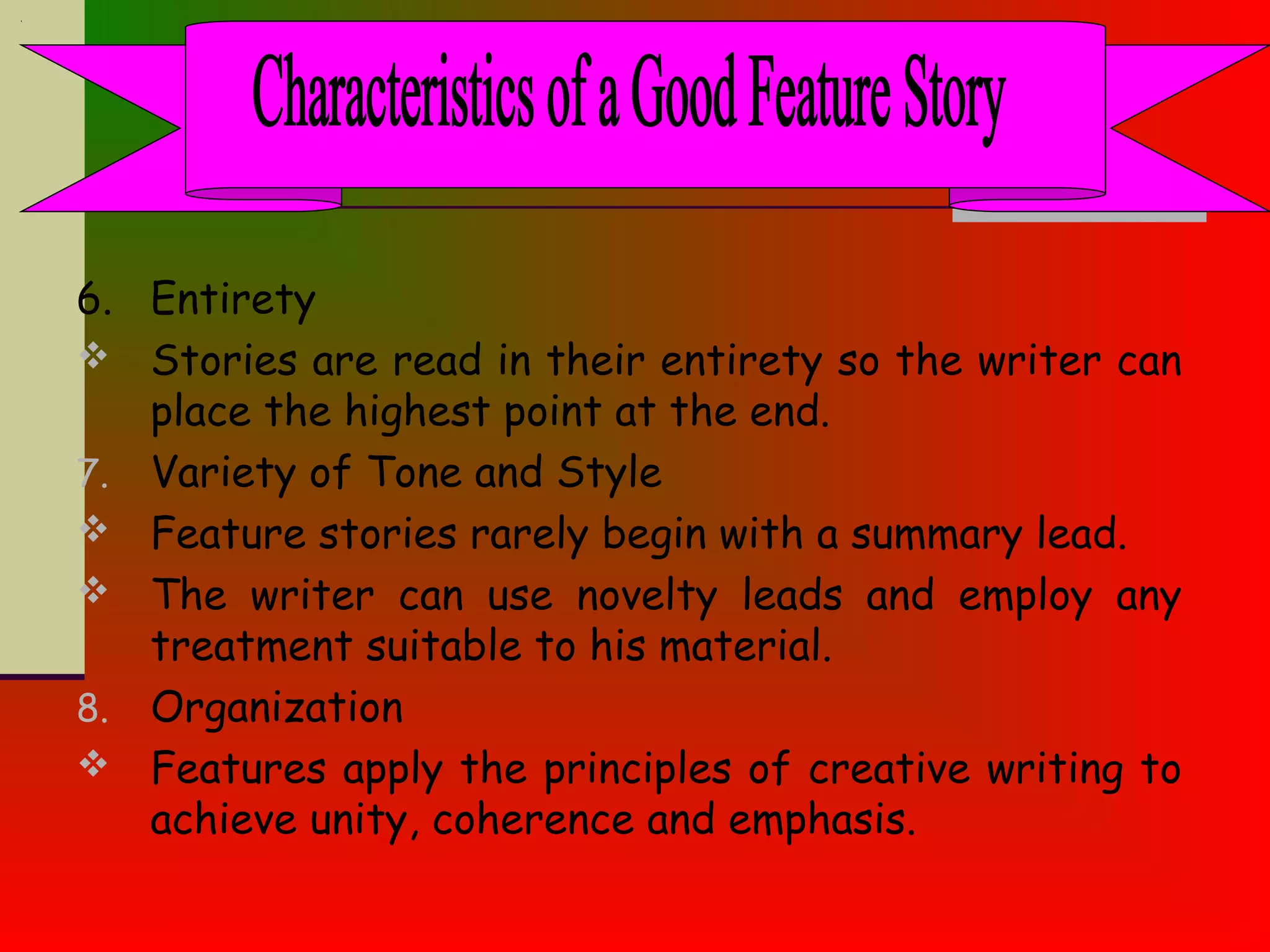
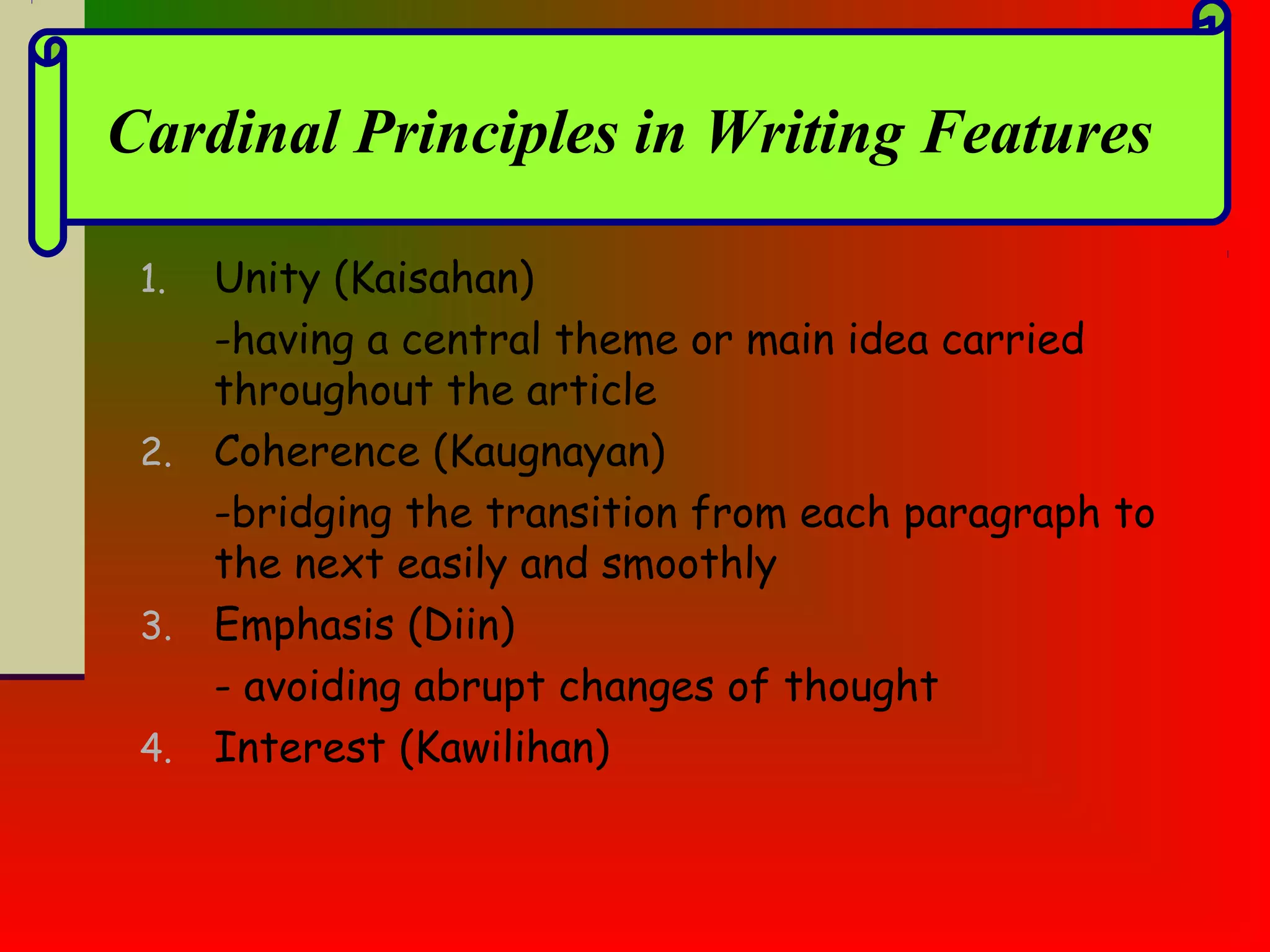
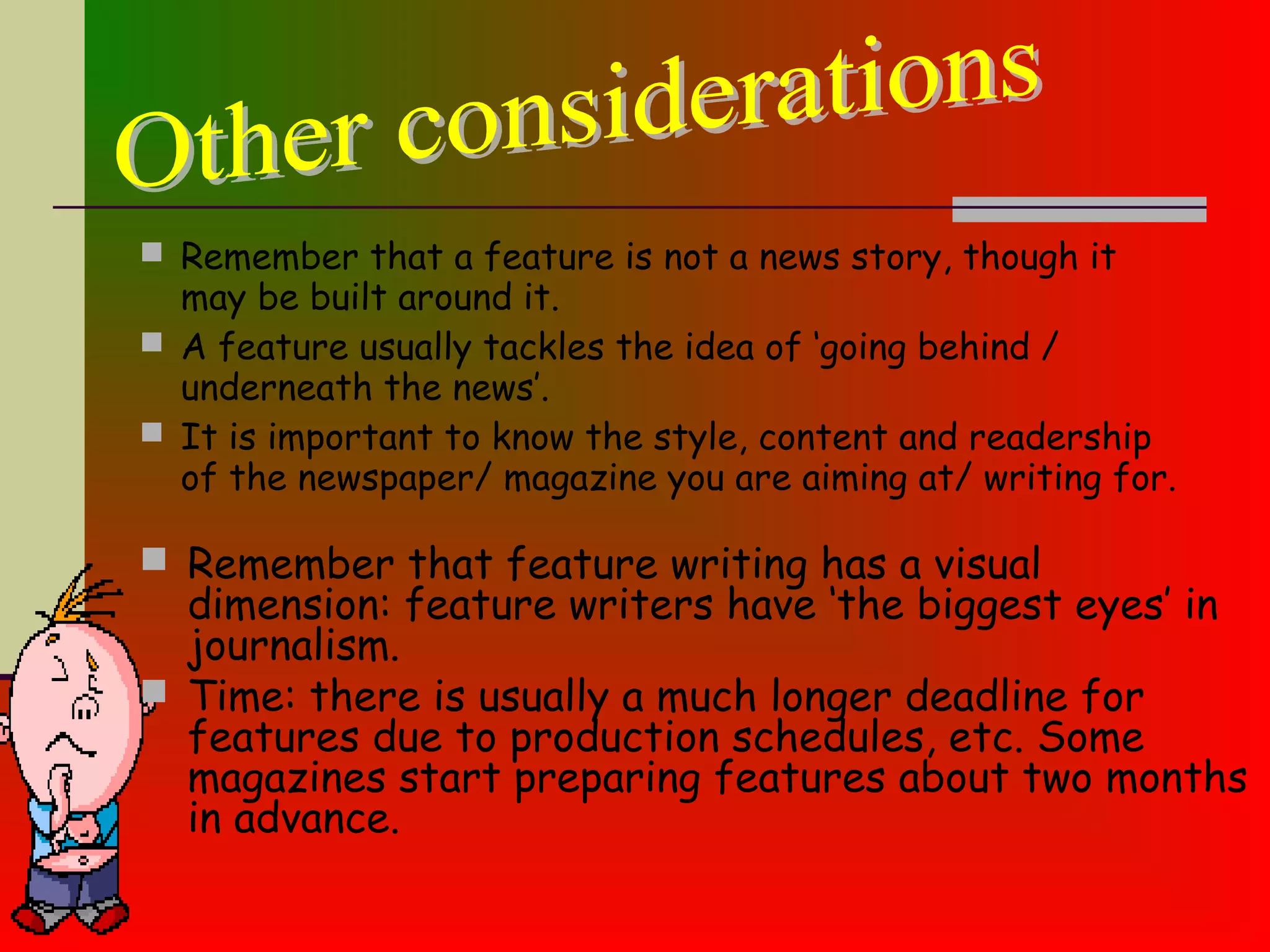
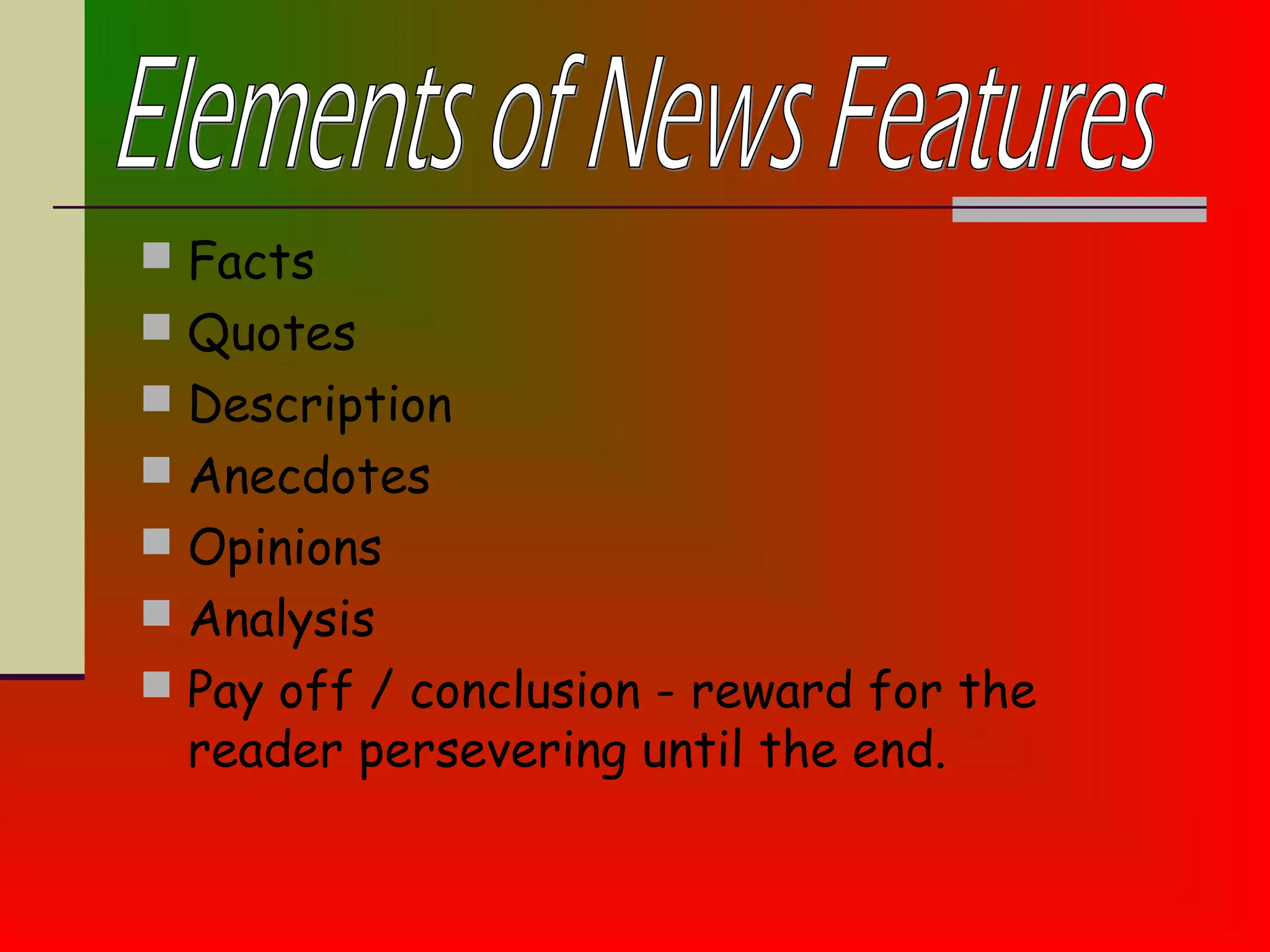
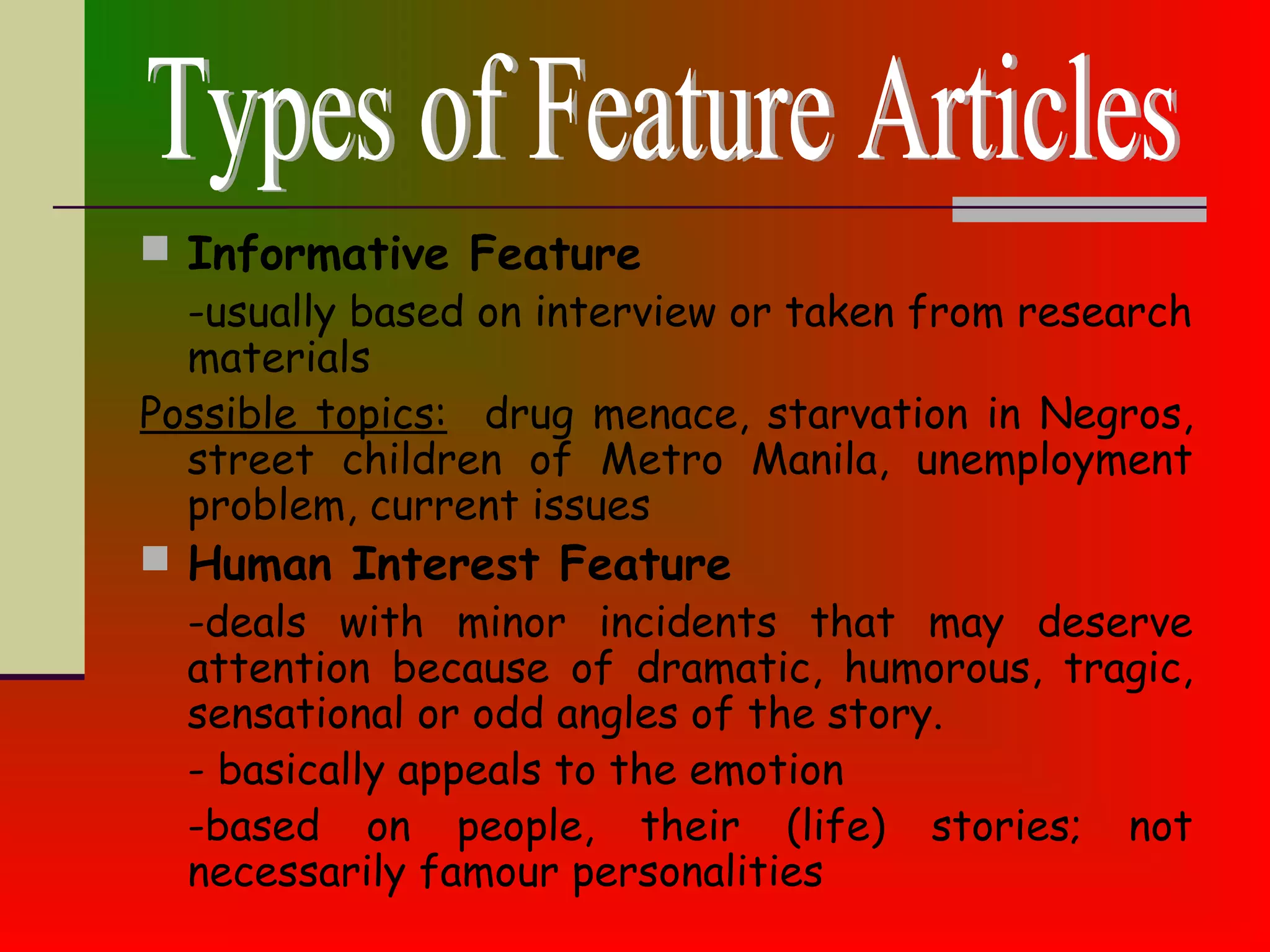

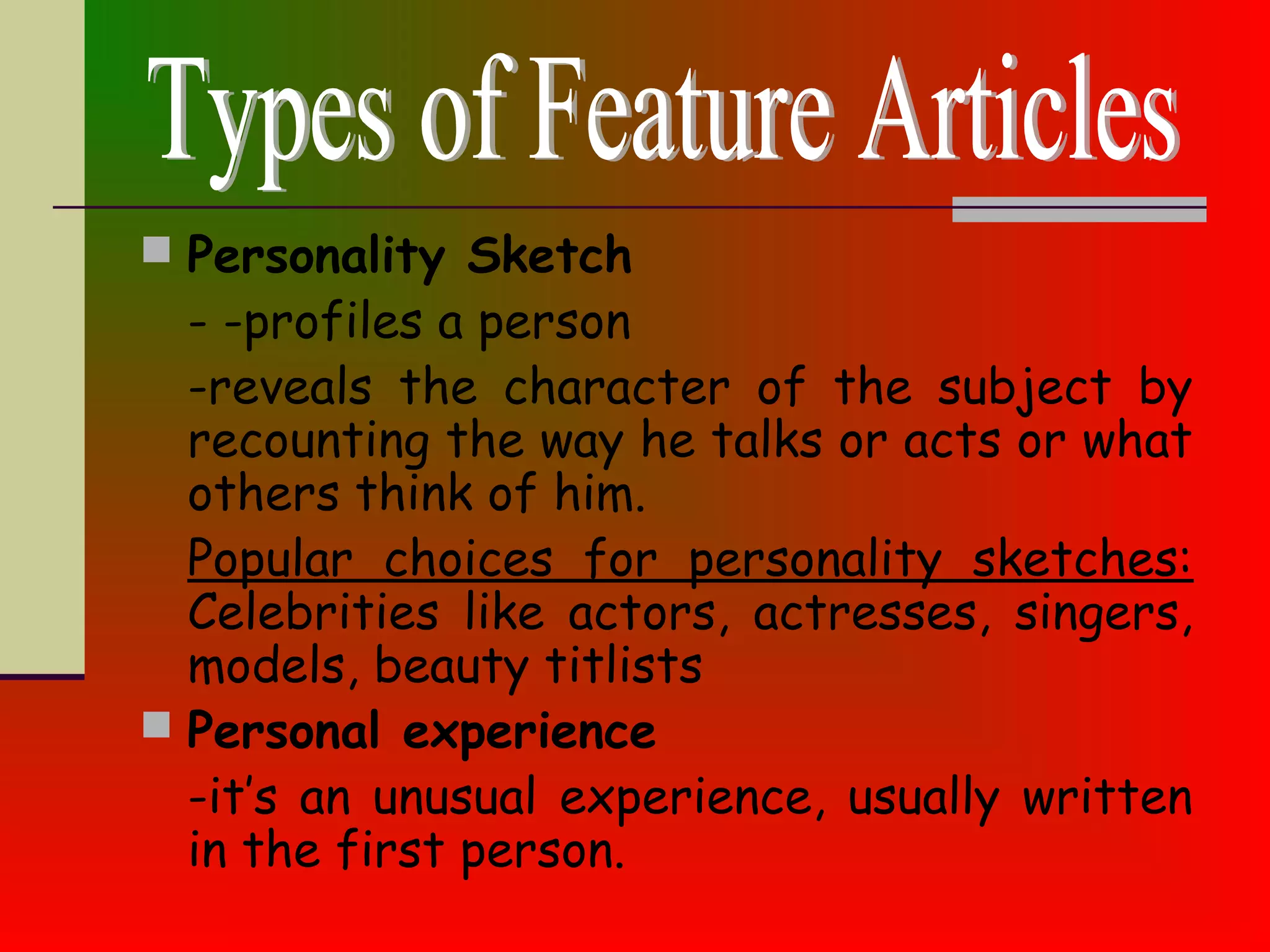

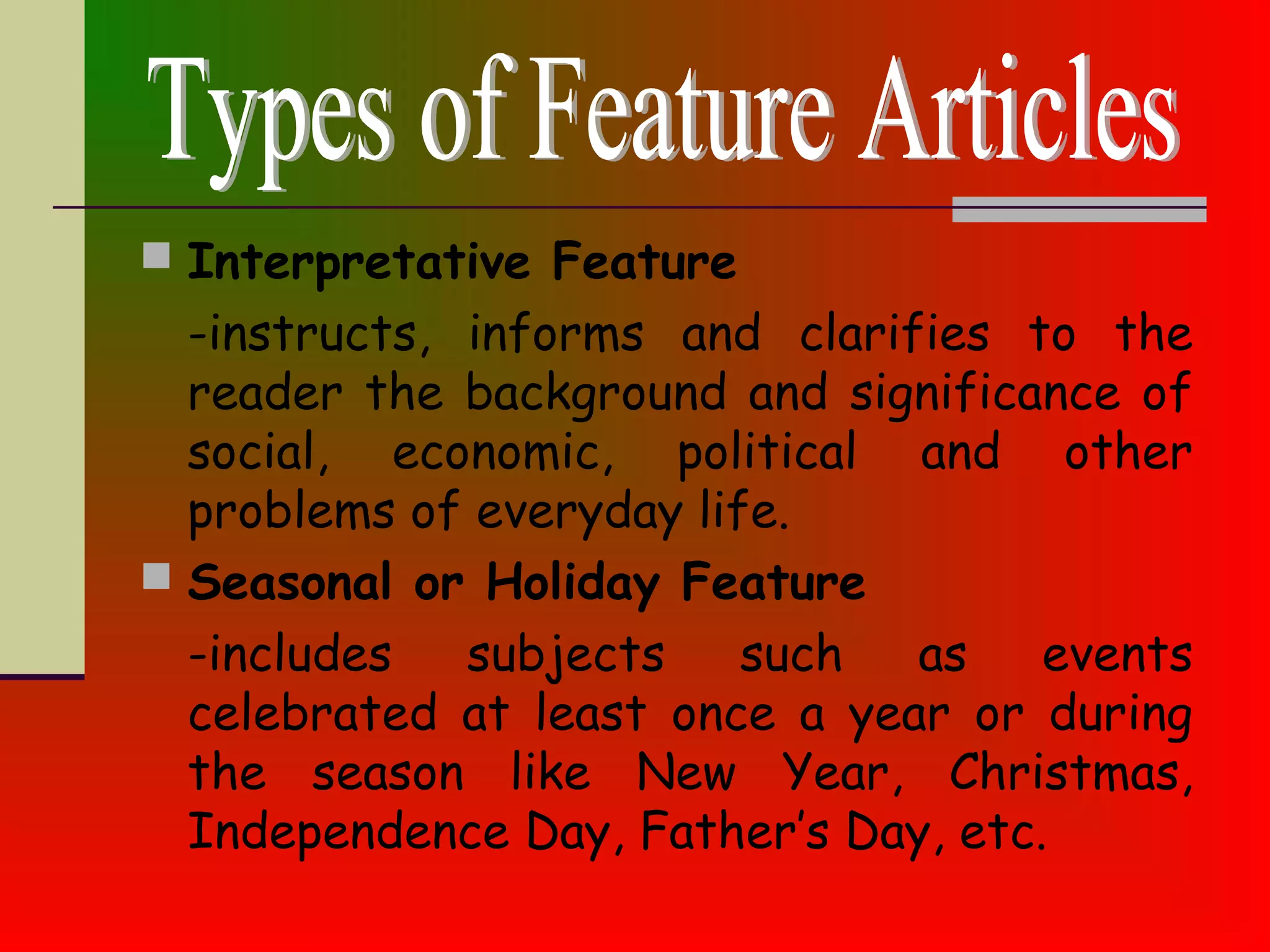
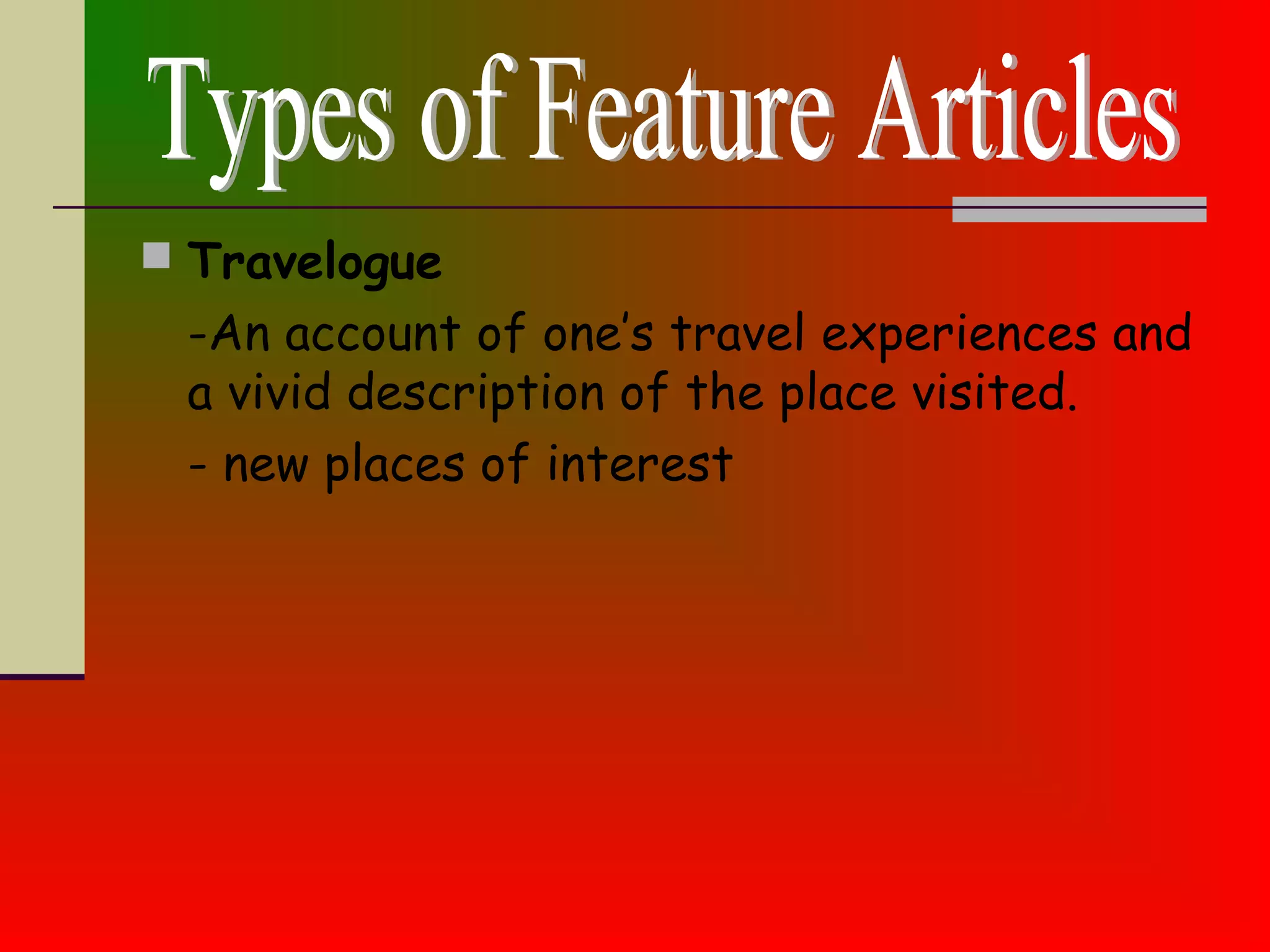
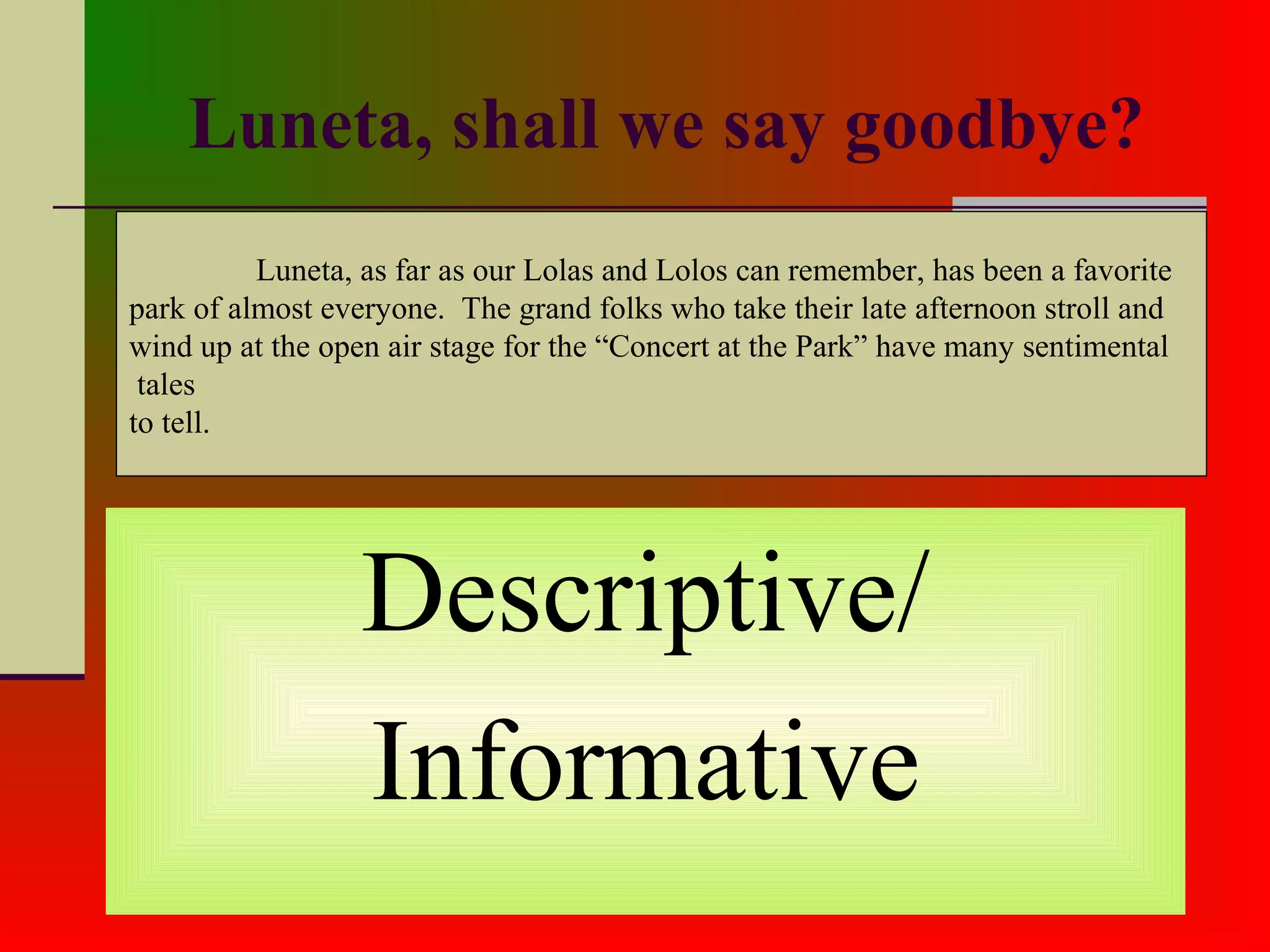
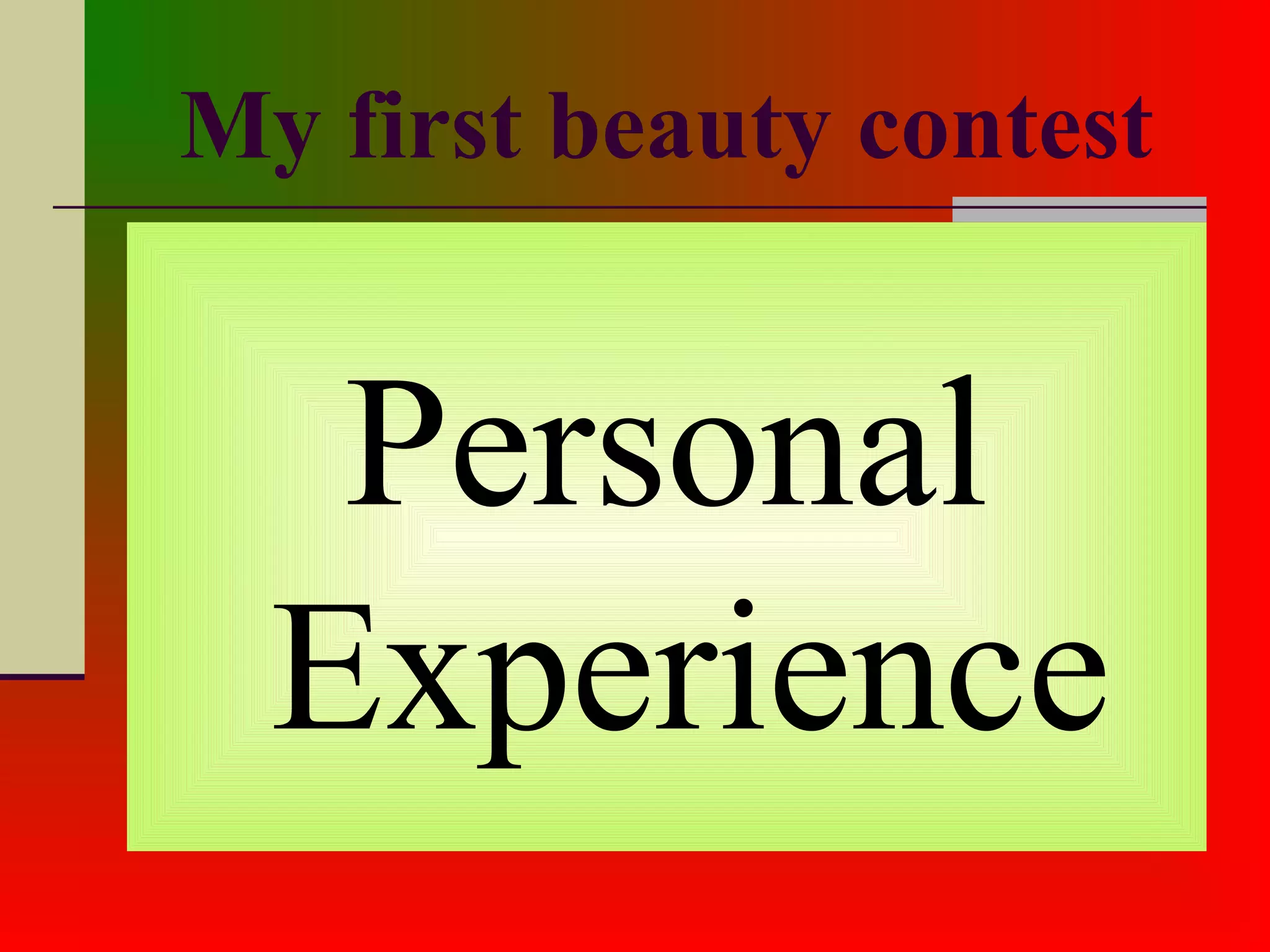

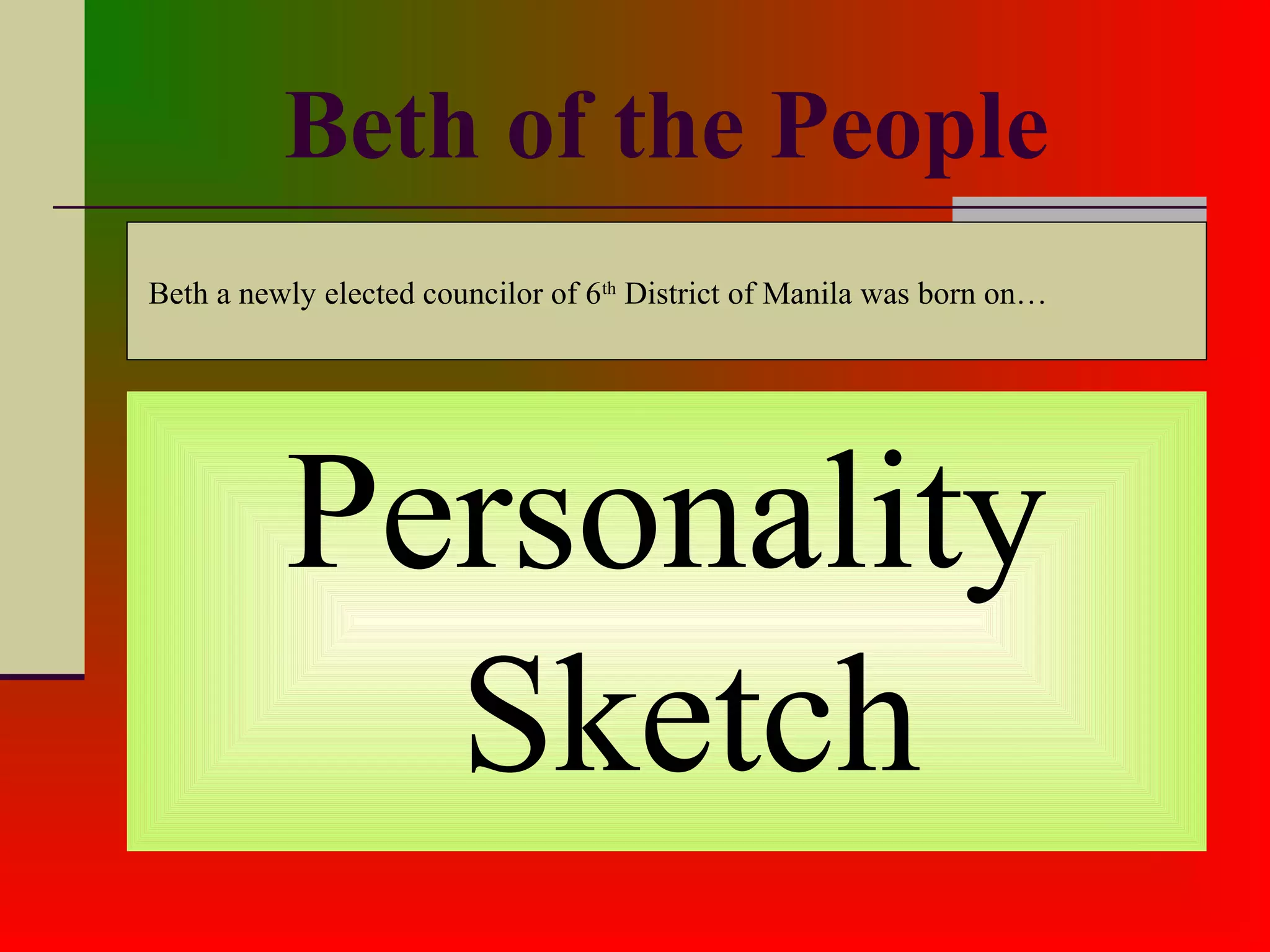
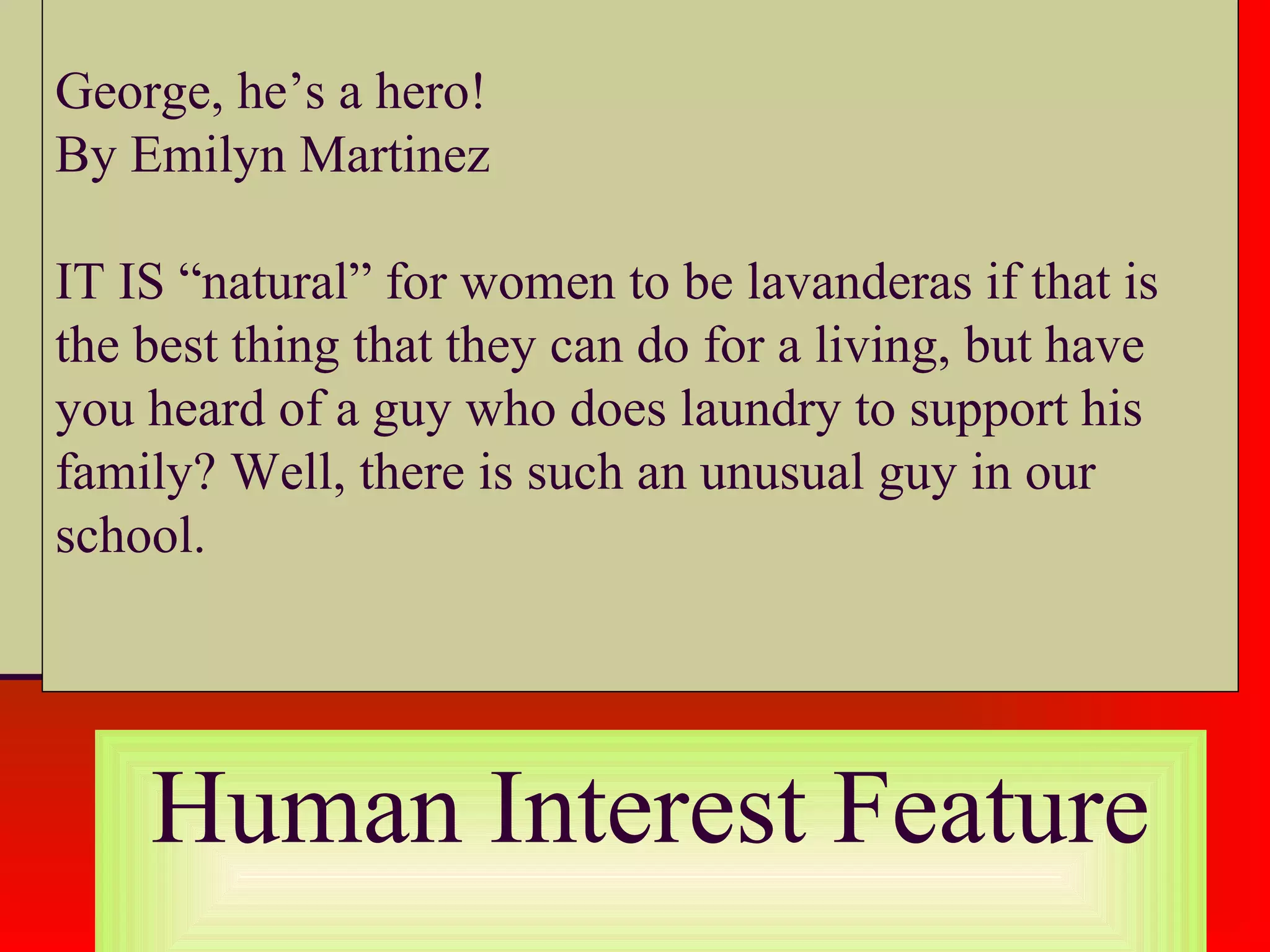
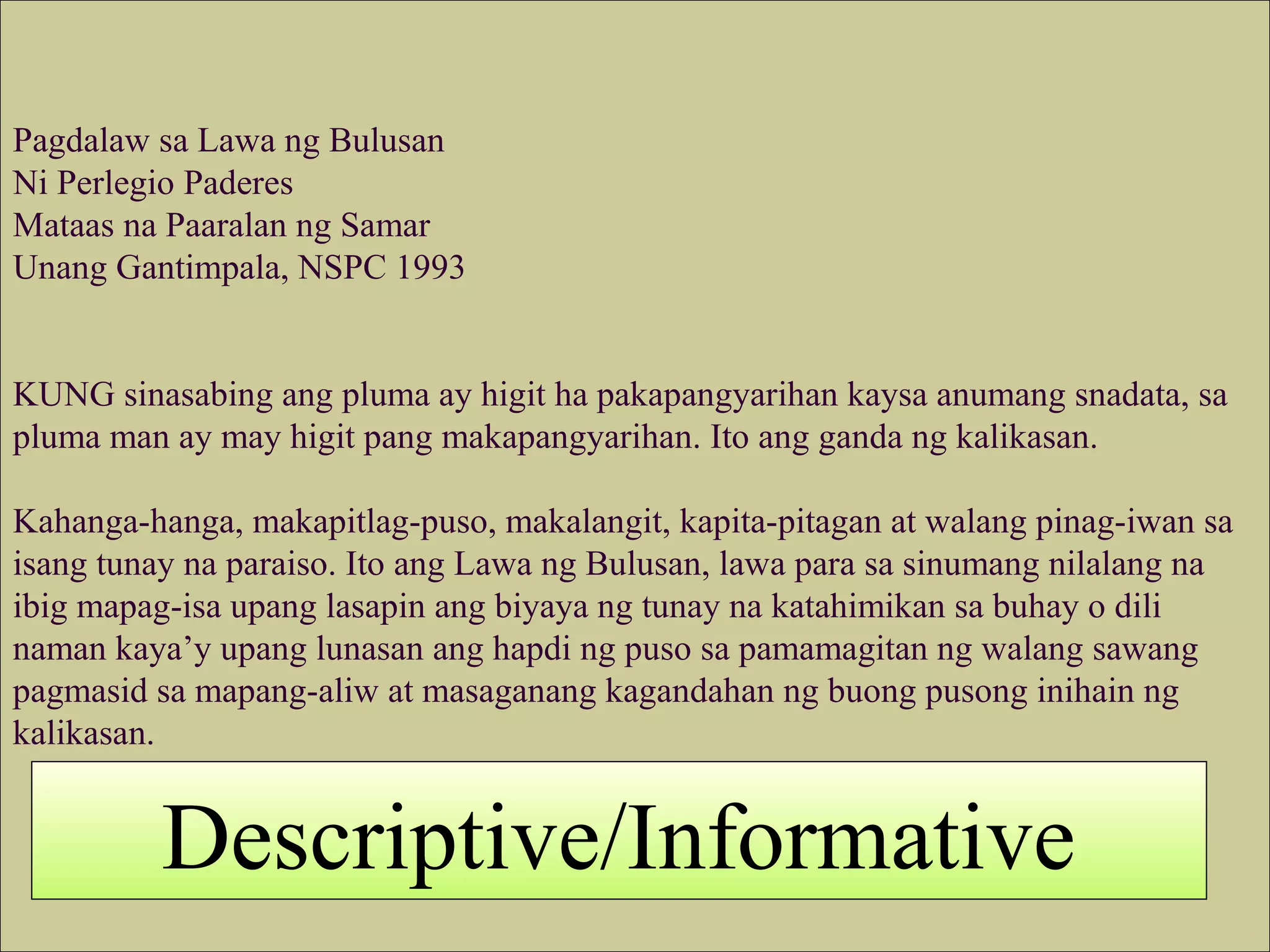


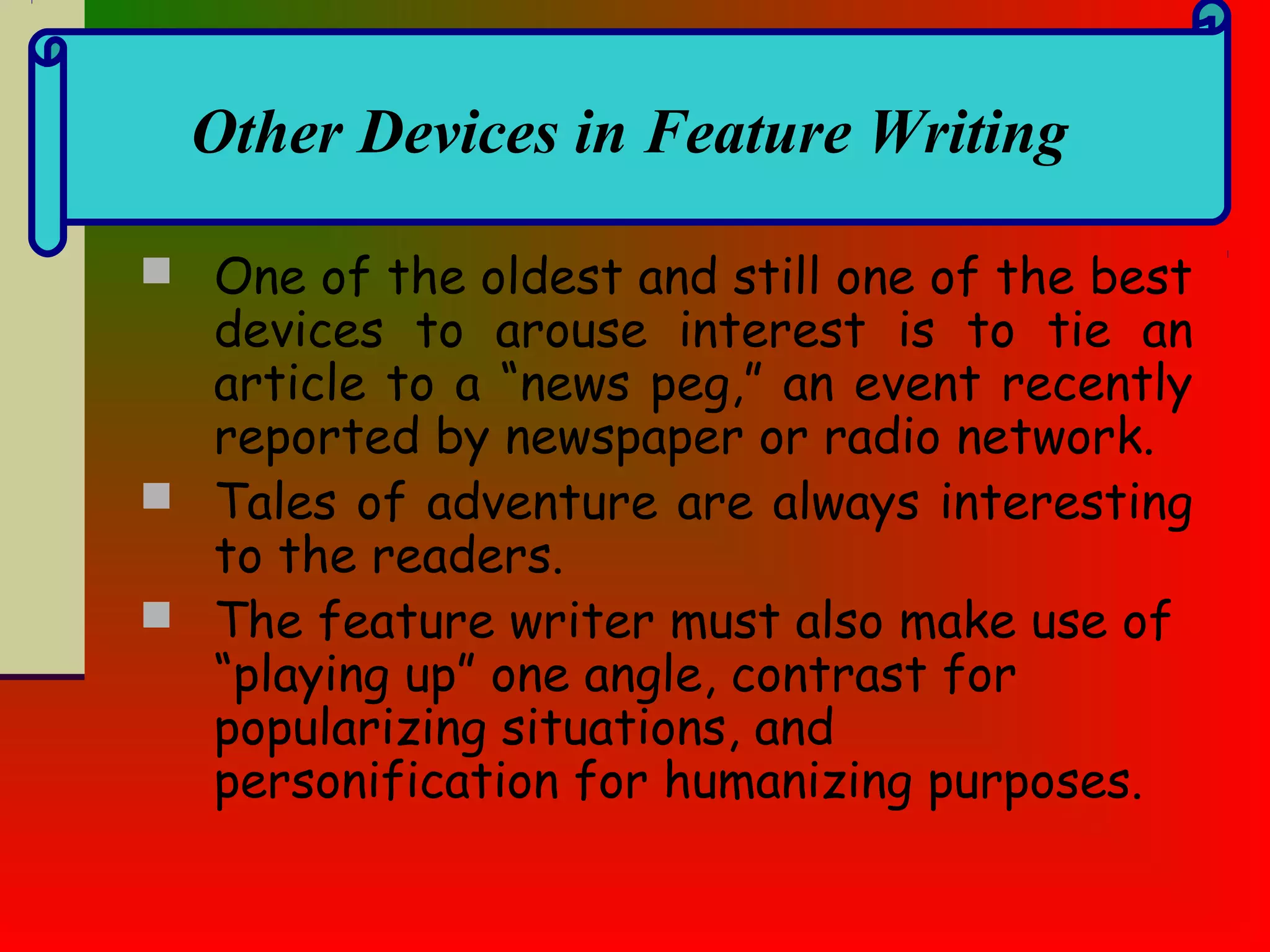
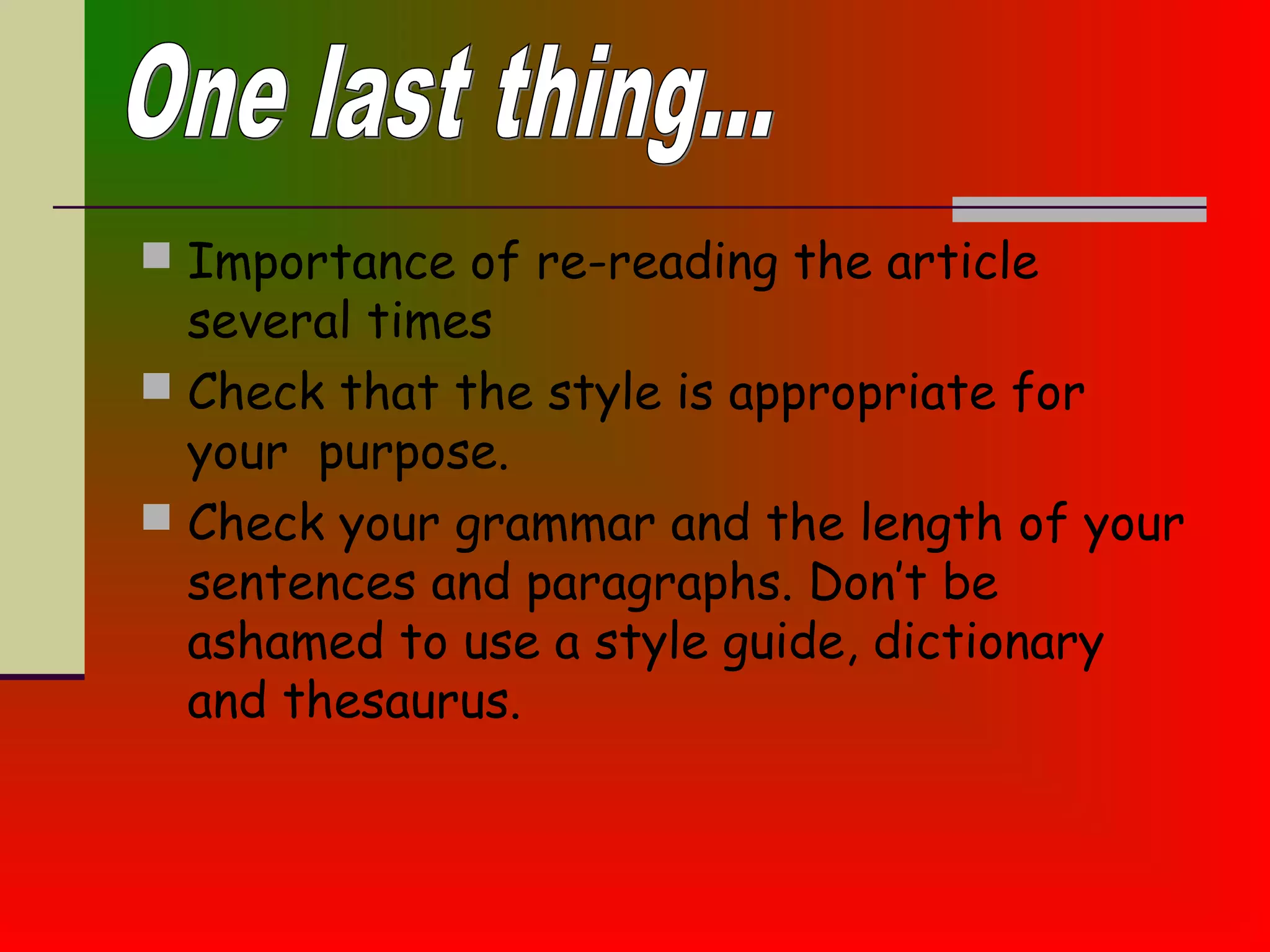

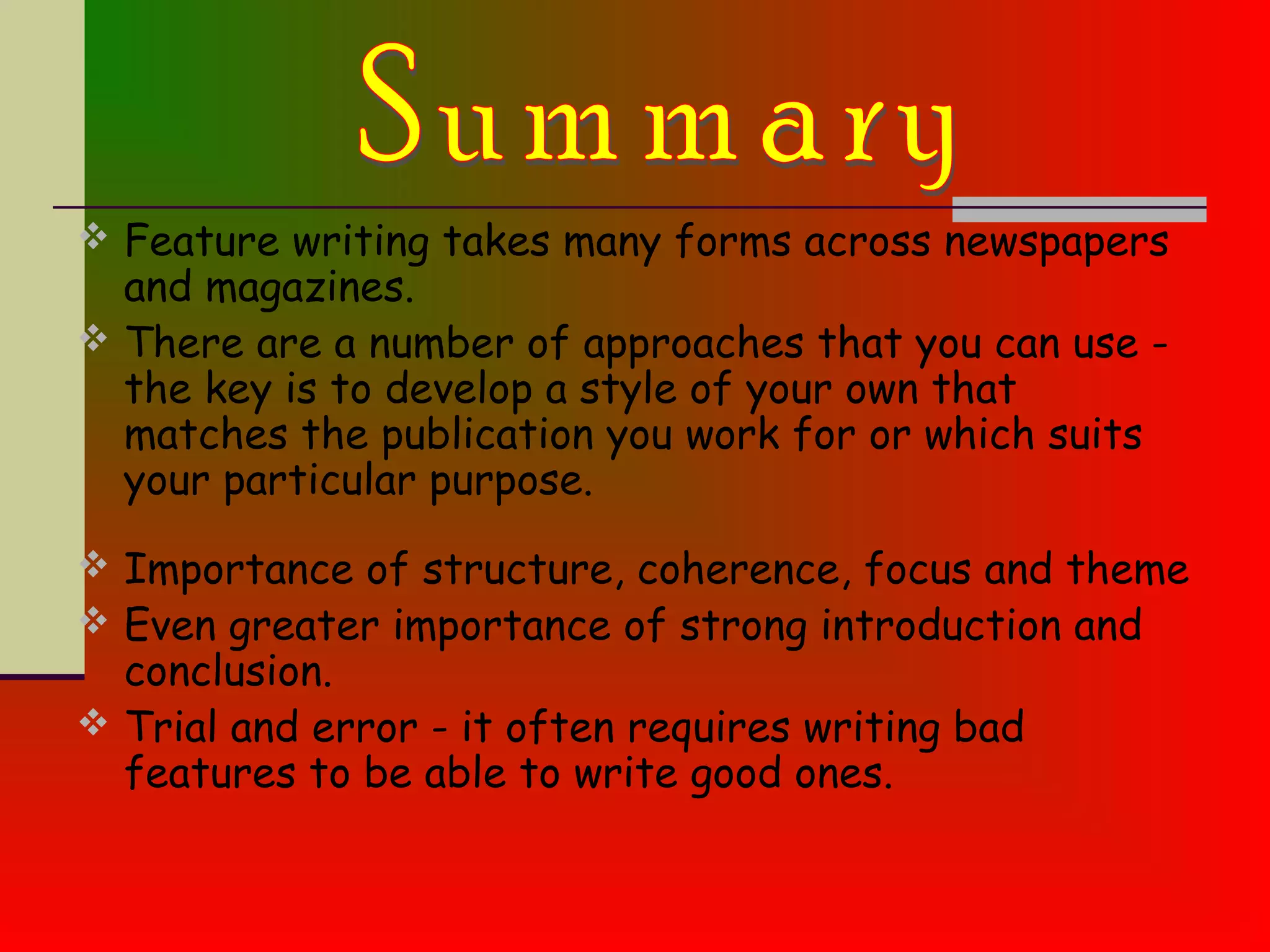
![Example:
“We happily hopped out the truck…”
“[The rain] waltzed with the wind!”
“Nothing super specific. Nothing deadly demanding.
Nothing surprisingly strange.”
“The only things duplicated close to reality were our
smiles exuding excitement.”
“…it could mean a warm welcome, a bubbly
birthday greeting, a great gratitude, a crowning
congratulations, a friendly farewell…”
using several words
that begin with the
same or similar
consonants](https://image.slidesharecdn.com/featurewritinglecture-queen-130824102341-phpapp01/75/Feature-Writing-39-2048.jpg)
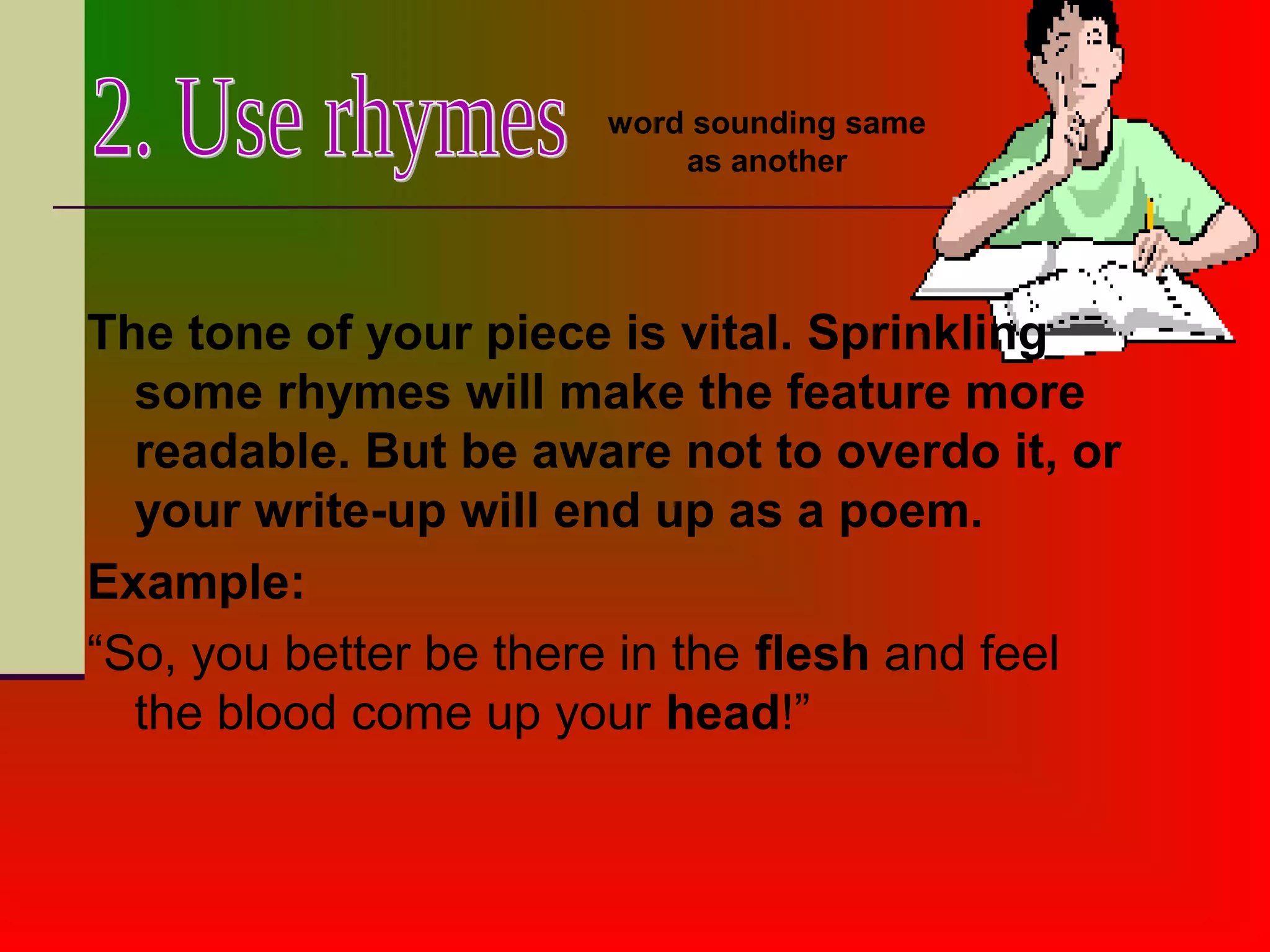
![The Figures of Speech is an effective tool in
enhancing you feature writing. Make use of them
frequently.
Example:
Simile:
“My abdomen began to itch like ants infesting it.”
“[The showers were ] like pure, wet silk gently wiping my
forehead down to my chin.”
“…smoothly swinging like a fine golden lace.”
simile, metaphor, personification, and hyperbole.](https://image.slidesharecdn.com/featurewritinglecture-queen-130824102341-phpapp01/75/Feature-Writing-41-2048.jpg)
![“Saying that somebody is a snake.”
Personification:
“…colorful and transparent stripes rested upon
the green leaves of a petite coconut
tree; almost kissing the ground.”
“…allowed the [rain] showers tickle my tired
face.”
“I am amazed by the electronic box
that swallowed up my one-dollar fare…”
Metaphor:
the use to describe somebody or something of a word
or phrase that is not meant literally but by means of a
vivid comparison expresses something about him, her,
or it
the attribution of human qualities to
objects or abstract notions](https://image.slidesharecdn.com/featurewritinglecture-queen-130824102341-phpapp01/75/Feature-Writing-42-2048.jpg)
![Hyperbole:
[The waves ] really were overwhelming, they
could swallow a mountain.
“[The leis] almost drowned my face.”
deliberate and obvious
exaggeration used for effect](https://image.slidesharecdn.com/featurewritinglecture-queen-130824102341-phpapp01/75/Feature-Writing-43-2048.jpg)
